4.7.5. REQUIRED LANDSCAPING.
A. Requirements. All of the areas listed in this Section 146-4.7.5 shall be landscaped as described in this Section 146-4.7.5. If there is a conflict between the various landscaping standards, the more restrictive standard shall apply. Wherever the requirements for two or more landscaping standards overlap, the same plant material may be counted toward meeting the requirements of both standards, however the more restrictive standard must be met. Cross-references to some subsections of Section 146-4.7.5 commonly applicable to development and redevelopment are provided below, but additional subsections address specific areas, types of development, or development situations, and all applicable provisions in this Section 146-4.7.5 shall apply regardless of whether cross-referenced below.
1. Curbside Landscape, See Section 146-4.7.5.C
2. Street Frontage Landscape Buffers, See Section 146-4.7.5.D
3. Parking Lot Landscaping - Exterior, See Section 146-4.7.5.K.
4. Parking Lot Landscaping - Interior, See Section 146-4.7.5.K
5. Building Perimeter Landscaping, See Section 146-4.7.5.J
6. Non-Street Perimeter Buffers, See Section 146-4.7.5.E
7. Detention Pond and Water Quality Ponds, See Section 146-4.7.5.M.
B. Landscape Components. Figure 4.7-1 below represents the typical landscape components required in a land development application and corresponds with the list of cross-references below. The specific landscape requirements can be found in this Section 146-4.7.5. The figure below is illustrative only; quantities shown are not necessarily representative of the requirements.

Figure 4.7-1: Landscape Components
C. Curbside Landscaping.
1. General.
a. Curbside landscaping shall include requirements for detached walks, street trees, curbside planting, mulches, and fence locations. Street trees and curbside planting are required whether on a public or private street.
b. Streets with detached walks shall have curbside landscapes that include the area within the right-of-way as measured between the back of curb and face of walk. The curb is not counted as part of the curbside landscape.
c. Street trees shall be centered within the curbside planting area unless defined by another provision of the Aurora City Code or an approved Master Plan. The uniform placement of street trees is intended to create a continuous street edge. Trees may be grouped to achieve a specific aesthetic; however, the intent is to avoid large areas without street trees. No gap between groupings of street trees shall exceed 120 feet, and no trees shall be placed in easements unless permitted by the easement holder.
d. Street trees shall be deciduous, thornless, fruitless canopy trees of species that mature to heights of between 30 and 60 feet and with canopies that mature to at least 25 feet wide.
e. Street trees shall be set back at least 50 feet from the face of a stop sign in order to maintain a regulatory sign visibility zone as shown in Figure 4.7-2.

Figure 4.7-2: Regulatory Sign Visibility Zone
f. Applicants shall retain City-owned street trees in order to preserve the City’s urban forest. Removal of City-owned street trees requires prior approval of the City Forester. If removal is necessary, tree mitigation fees may be applicable and will be determined upon inspection by the Forestry Department.
g. Applicants requesting to develop or redevelop within the Havana Overlay District shall not be required to comply with the curbside landscaping standards within this Section. Instead, all properties shall comply with right-of-way planting standards in Section 146-2.6.7 (Havana Street Overlay (-HSO).
h. Curbside landscaping is required and is in addition to street frontage landscape buffers described in Section 146-4.7.5.D.
2. Detached Walks.
a. Minimum Plant Material Quantities. One tree per 40 linear feet of street frontage plus shrubs, water-wise xeric grass species, native seed, ornamental grasses, and perennials, as required by this Subsection C.
i. Curbside landscape areas that are less than four feet in width shall be mulched with rock mulch or wood mulch, no white rock. Rock shall be a minimum of 2.5 inch diameter.
ii. Curbside landscape areas that are between four and seven and one-half feet in width shall be planted with shrubs meeting the minimum quantity requirements as defined by this Section. Ornamental grasses may also be provided. Refer to Figure 4.7-3 below.

Figure 4.7-3: Substitute for Non-Xeric, Cool-Season Grass in Curbside Landscape Area
iii. Curbside landscape areas that are between eight and 10 feet in width shall be planted with shrubs at a minimum. Ornamental grasses as well as water conserving (xeric) seed and/or grass species may be provided in between shrub and ornamental grass beds.
iv. Curbside landscape areas that are 10 feet in width or wider may be planted entirely with either a water conserving (xeric) grass species or native seed. A combination of shrubs and ornamental grass beds may be incorporated within the curbside landscape area meeting the minimum quantity requirements as defined by this Section.
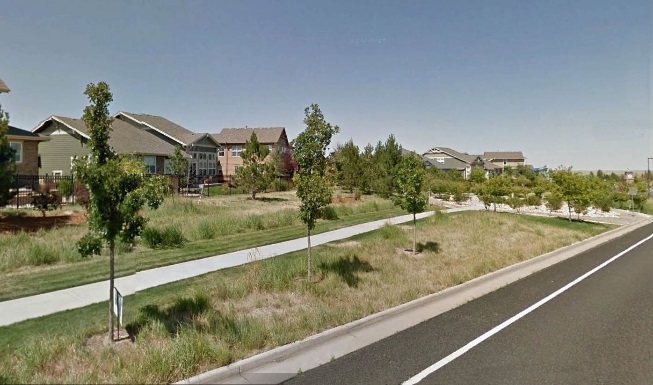
Figure 4.7-4: Curbside Landscape Native Seed Application
v. Curbside landscapes shall provide no less than one shrub per 40 square feet of curbside landscape area. Shrub equivalents may be installed but may not account for more than 40 percent of the total shrub count provided as shrub equivalents. Shrubs are assumed to be an average of four feet wide at maturity. No more than five percent of perennials may be provided as shrub equivalents. Calculations for the plant quantities shall be done first. Any area within the curbside planting bed that is remaining shall be completed with either wood or rock mulch, or native seed depending upon the width of the curbside landscape. Provide a variety of shrub species that differ in height, color and width for visual interest throughout the seasons. Shrubs and ornamental grasses shall be five gallon size at time of installation and perennials shall be provided at a ratio of three one-gallon perennials to one five-gallon shrub.
vi. The use of native seed within the curbside planting areas within the MU-OA zone district may be approved on a case-by-case basis by the Planning Director based on appearance and durability in the location where it is to be installed. Given the urban and fully developed character of the MU-OA zone district, native seeding may not be appropriate.
vii. When located within a sight distance triangle, plant materials shall comply with the provisions of Section 146-4.2.3.I. Refer to the Aurora Roadway Design and Construction Specifications Manual for sight distance triangle design parameters.
viii. Rock mulch within the curbside landscape area may be used in between planting beds, but may not be used as 100 percent coverage in the curbside planting area, unless the exception in Section 146-4.7.5.C.2.a.i applies.
ix. Additional trees may not be provided in the curbside landscape area as a substitute for the living ground cover treatment such as shrubs, ornamental grasses, or perennials.
b. Street Tree Measurements. For detached sidewalks, street tree quantities shall be determined by taking the measurements as shown in Figures 4.7-6 and 4.7-7 below.

Figure 4.7-6: Street Tree Measurement – Detached
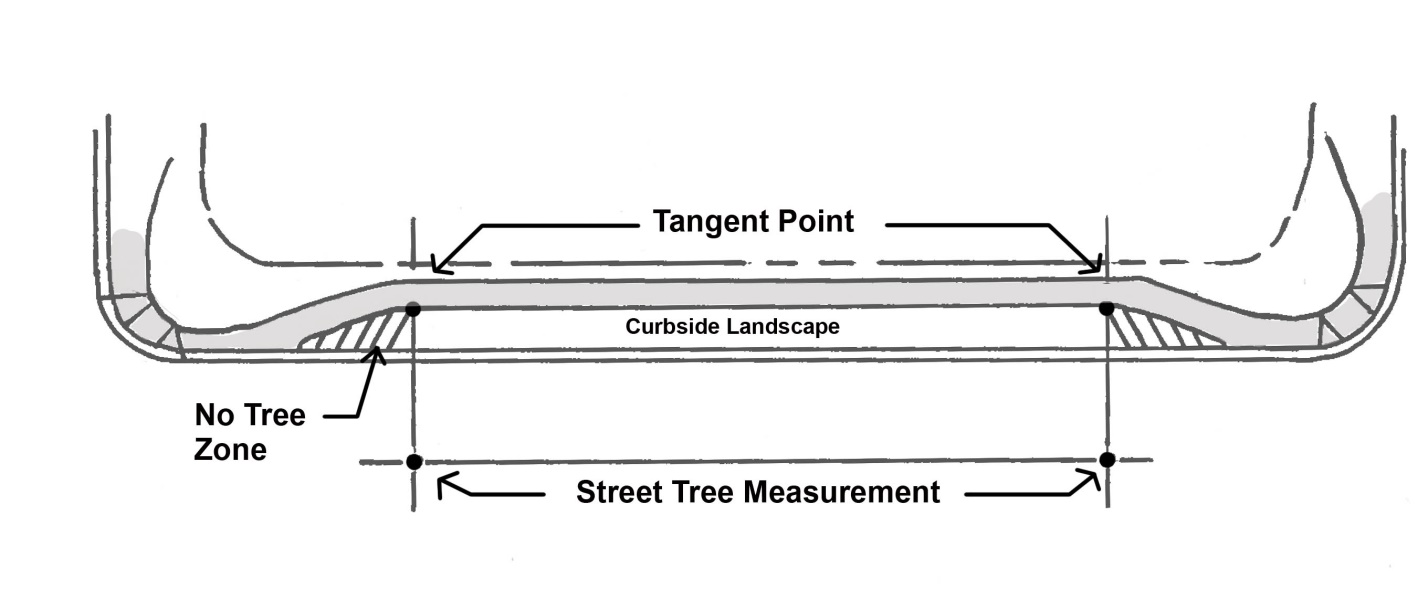
Figure 4.7-7: Street Tree Measurement – Detached
c. Use of Living and Non-Living Materials. The following standards apply to sites with detached sidewalks:
i. In addition to the required street trees, curbside landscaping within the right-of-way may consist of both living and non-living landscape materials.
ii. Living materials shall include water-wise deciduous or evergreen shrubs, ornamental grasses, perennials, ground covers, water-wise xeric grass species, and/or native seed consistent with Subsection C.2.a.ii above.
iii. Non-living landscape materials may consist of wood mulch and rock mulch in combination with living plant material consistent with Section 146-4.7.5.C.2.a.ii. Crusher fines may not be used as a mulch treatment. Crusher fines may be installed to support limited areas of high pedestrian traffic generated by adjacent land uses or as step-out areas supporting on-street parking within the curbside landscapes as a means to access adjoining sidewalks.

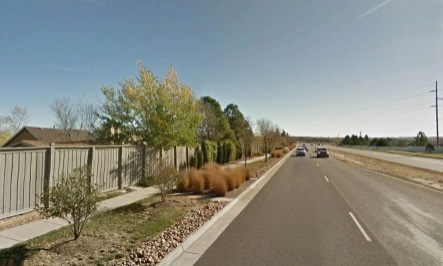
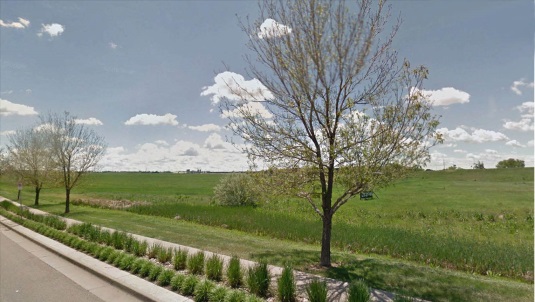
Figure 4.7-8: Examples of Detached Sidewalk Curbside Landscapes
3. Attached Sidewalks.
a. Minimum Plant Material Quantities. One tree 40 per linear feet of street frontage.
b. Street Tree Measurements. For attached sidewalks, street tree quantities shall be determined by taking the measurements between the tangent points in Figure 4.7-9 below.

Figure 4.7-9: Street Tree Measurement - Attached
c. Location.
i. Adjacent to attached sidewalks, street trees shall be located between four to five feet from the back of curb or edge of sidewalk.
ii. In an attached sidewalk condition, street trees and street frontage landscape buffers may overlap. In this scenario, street trees may count toward the buffer plantings if approved on a case-by-case basis by the Planning Director based on appearance and effectiveness as a buffer in the location where the trees are to be installed.
4. Urban Street Frontages. Urban street frontages are those that are required to have attached walks with tree openings and no curbside landscape. Urban street frontages include widened sidewalks to accommodate outdoor cafes and pedestrian thruways, site amenities such as benches, lighting and wayfinding as well as landscaping to strengthen the urban tree canopy, plant containers and raised planters to enhance the pedestrian realm and minimize the appearance of hardscape.
a. Zones. The urban street cross-section is divided into functional areas or zones based upon a total 16 foot width. These zones are called the Edge Zone, the Furnishings Zone, the Pedestrian Throughway Zone, and the Frontage Zone. See Figure 4.7-10.
i. Edge Zones. The Edge Zone is located within approximately one and one-half feet from the face of curb, and does not contain landscaping, plant containers, raised planters, or other items that will interfere with traffic and/or snow plowing. Tree openings flush with the grade may encroach into the Edge Zone. The Edge Zone is only required when on street parking is provided.
ii. Furnishings Zone. The Furnishings Zone abuts the Edge Zone and is five feet wide. Its purpose is to accommodate street trees within tree openings, decorative pavement, site furnishings, bus shelters, and lighting. Landscape requirements include the installation of one street tree per 35 linear feet of street frontage. Street trees shall be located in tree openings at least five feet by 15 feet in size and near property lines to the maximum extent practicable. Street trees shall be accompanied by ornamental grasses, perennials and/or shrubs in the tree openings or by non-living materials such as rock and wood mulch. Street trees shall be either large deciduous canopy tree species or ornamental tree species. The combined height of groundcovers shall be not more than 26 inches tall when within a sight triangle.
iii. Pedestrian Throughway Zone. The intent of the Pedestrian Throughway Zone is to allow efficient, direct, and unobstructed access at least six feet wide along sidewalks. The Pedestrian Throughway Zone shall be clear of all plant containers, raised planters, plant beds, and other site amenities. Branches of maturing street trees encroaching into this zone shall be pruned to a height of not less than eight feet. Outdoor cafes may be located within this zone, but shall not obstruct pedestrian movements. To allow for a wider outdoor seating area, a five foot pedestrian throughway may be approved by the Planning Director on a case-by-case based on considerations of pedestrian access, pedestrian safety, and plant survival.
iv. Frontage Zone. The Frontage Zone abuts the façade of the building and is three-and-one-half feet wide. Whenever landscaping is voluntarily provided within the Frontage Zone adjacent to a building façade, landscaping may be provided within plant containers, raised plants beds or at grade. In addition to plantings, this area would be ideal for outdoor seating with tables and chairs. Any voluntary landscaping shall be in addition to street tree requirements.
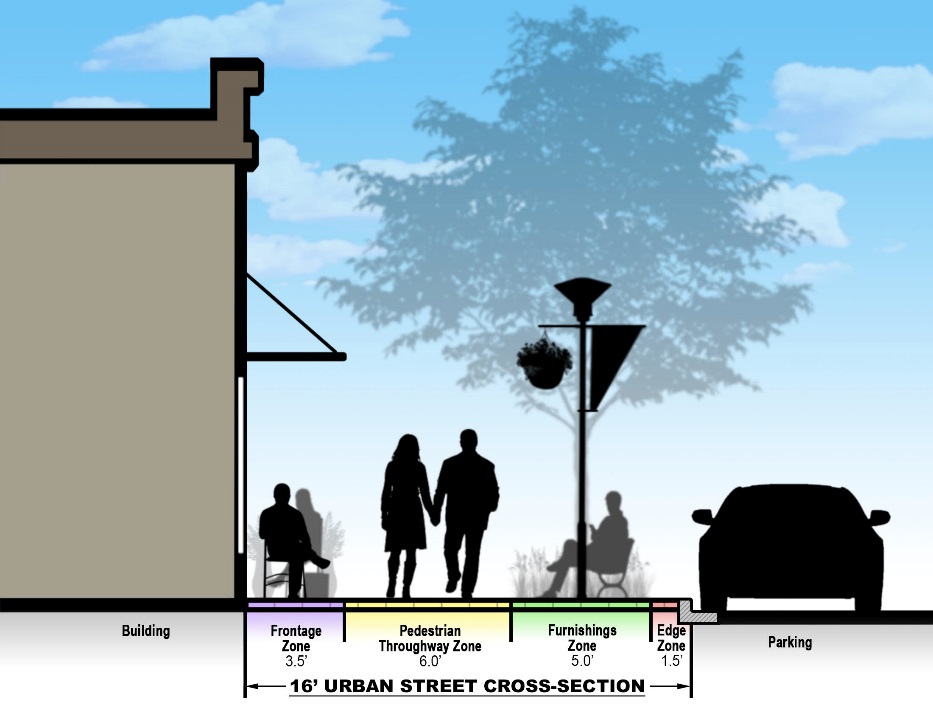
Figure 4.7-10: Urban Street Frontage Zones With Parallel Parking
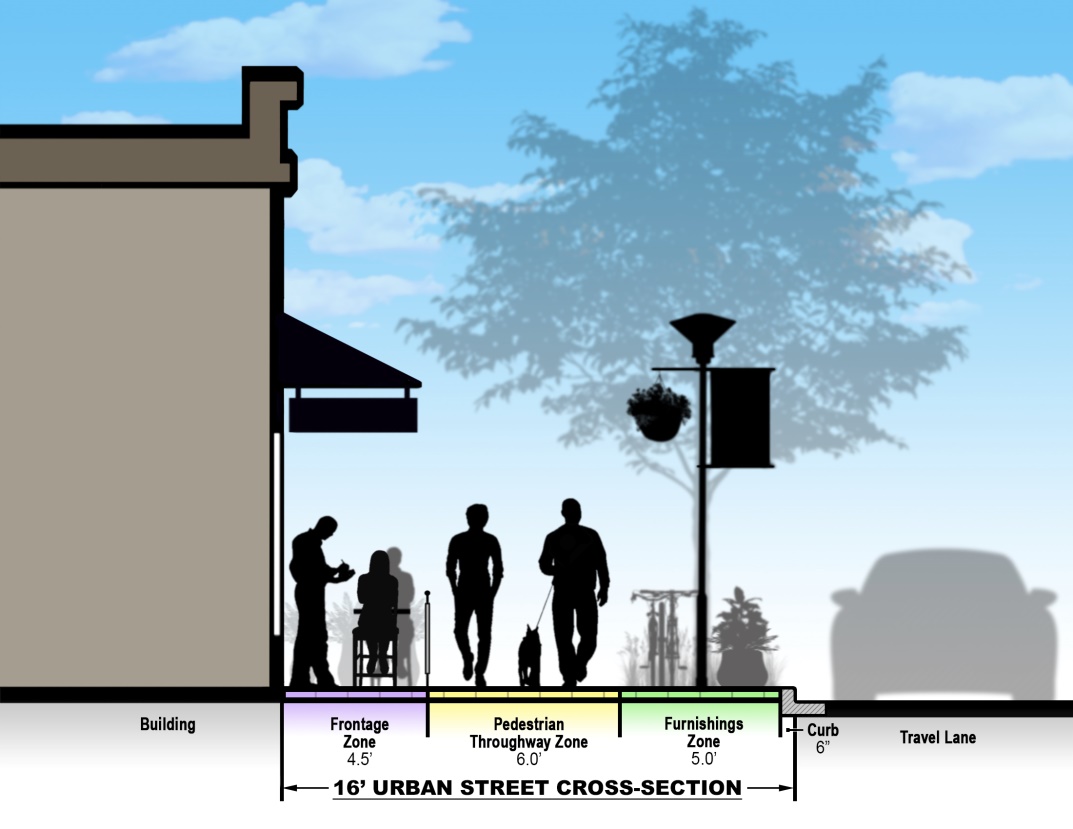
Figure 4.7-11: Urban Street Frontage Zones Without Parallel Parking
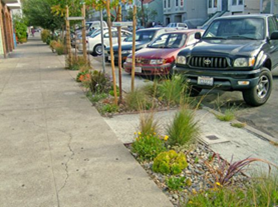

Figure 4.7-12: Urban Streetscape Examples
b. Urban Street Trees. Refer to the Landscape Reference Manual regarding the City of Aurora Recommended Xeriscape and No-Water Plant List.
c. Mulch Rings. A minimum four foot diameter mulch ring shall be placed around each tree planted within an urban turf area or within a tree opening within the pavement. The mulch ring shall consist of organic materials placed at a depth of not less than three inches. Crusher fines, crushed gravel or granite shall be not be used as a mulch in tree openings within pavement.
d. Tree Opening Options. Urban conditions often require special design considerations in an effort to preserve and promote urban tree canopy. Alternative tree planting and sidewalk modifications that could improve the life expectancy of an urban tree or that will provide a more advantageous growing area for tree roots and create opportunities for water quality may be approved by the Planning Director on a case-by-case basis based on appearance, durability, and potential success in achieving these goals in the location where the trees are to be installed. While not an all-inclusive list, designers may wish to consider the following options or propose other alternatives not currently listed below.
i. Rubber Sidewalks. Rubber sidewalks are not installed as deep and the material is not as thick as a traditional sidewalk thereby providing more space for tree root growth. The panels are pervious allowing storm water to seep down between the panels increasing infiltration rather than running into street gutters. Maintenance costs often associated with removing existing concrete, hauling it away and replacing it are reduced as panels can be easily be removed individually to examine and/or trim tree roots.

ii. Structural Cells. Structural cells are strong plastic structures that firmly support sidewalks and provide an expanded area for greater soil volume capacity. The increased soil volume can lead to an expanded rooting zone thereby supporting larger tree growth. It is an ideal low impact development option for the long-term co-existence of trees and streets.
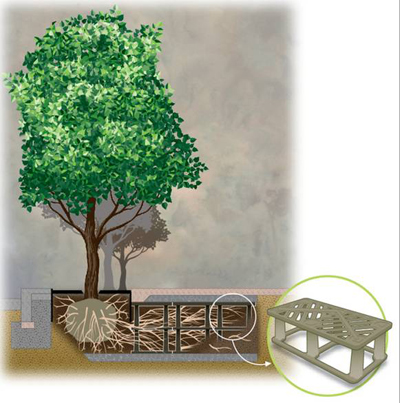
iii. Suspended Pavements. Suspended pavements are a type of technology that support the weight of paving while creating a larger subsurface void space that is filled with native, excavated or a specified planting mix. The system allows for an increase in the soil capacity providing a greater rooting area composed of lightly compacted soil. This system aids in urban tree growth, provides a source for on-site treatment of storm water for water quality purposes and recharges the watershed.
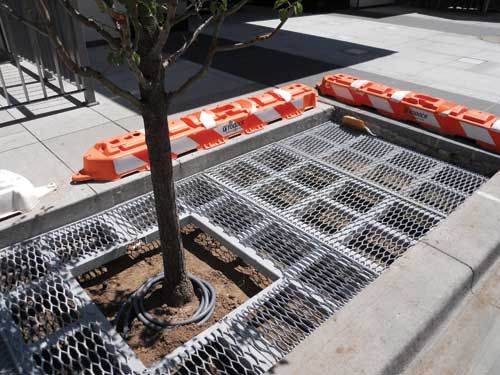
5. Exceptions and Exemptions.
a. If an easement conflicts with the installation of street trees, applicants shall provide shrub equivalents. If vegetation of any type, other than grass is prohibited by the easement holder, than the applicant shall be required to provide the required trees elsewhere on site. Relocated street trees shall not be used to satisfy other required landscaping (i.e. building perimeter, open space tract landscaping, buffers etc.) If the applicant and the City determine that site constraints prohibit the relocation of the street trees, then the applicant shall request an administrative adjustment.
b. Columnar trees will be permitted when a hardship is demonstrated, such as in confined planting areas or environmental conditions, and may be approved by the Planning Director on a case-by-case basis based on durability and appearance in the location where the tree is to be installed.
c. Existing deciduous street trees in good health and condition may be used to satisfy the street tree requirement if they are part of the curbside landscaping as described in this Section 146-4.7.5.C.
d. Evergreen trees shall not be used as street trees.
D. Street Frontage Landscape Buffers.
1. General.
a. Public and private street frontages shall include landscaping in accordance with this Section 146-4.7.5.D, unless another provision of this UDO or an approved Master Plan or Site Plan provides a different landscaping standard. The requirements of this Section shall be in addition to the required curbside planting (street trees and understory plantings) standards set forth in Section 146-4.7.5.C above.
b. The required depth of a street frontage landscape buffer is measured inward from the back of sidewalk or from a public or private right-of-way when a sidewalk is not present. On private streets with no right-of-way line, the street frontage buffer depth shall be measured inward from the back of the sidewalk or if no sidewalk exists, the buffer is measured from the back of the nearest curb line. See Figure 4.7-13.

Figure 4.7-13: Street Frontage Landscape Buffer Measurement
2. Exceptions.
a. Landscape street frontage buffers for single-family detached and multifamily developments facing an arterial and/or collector street shall measure their street frontage buffer from the back of walk. Refer to Figures 4.7-14 through 4.7-17.
b. Street frontage landscape buffer requirements are not applicable to residential structures as noted in Table 3.2-1 (Permitted Use Table) with the exception of single-family detached homes whose rear lots face an arterial or collector street and multifamily residential developments fronting an arterial or collector street. Refer to Figures 4.7-14 through 4.7-17.

Figure 4.7-14: Arterial Street Frontage Buffer Measurement Detached Straight Walk

Figure 4.7-15: Arterial Street Frontage Buffer Measurement Detached Meandering Walk
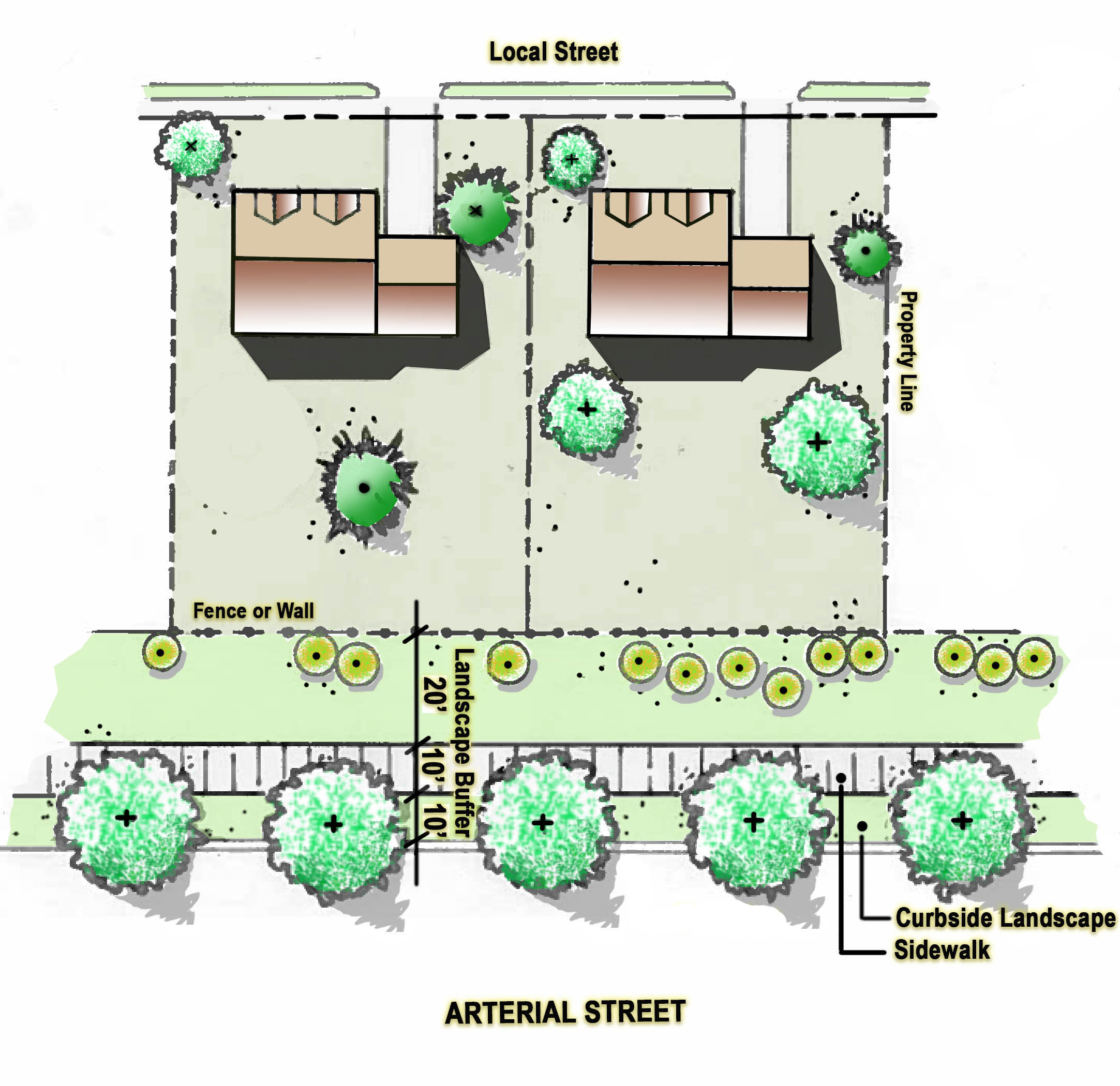
Figure 4.7-16: Arterial Street (Painted Median) Frontage Buffer Measurement Detached Straight Walk
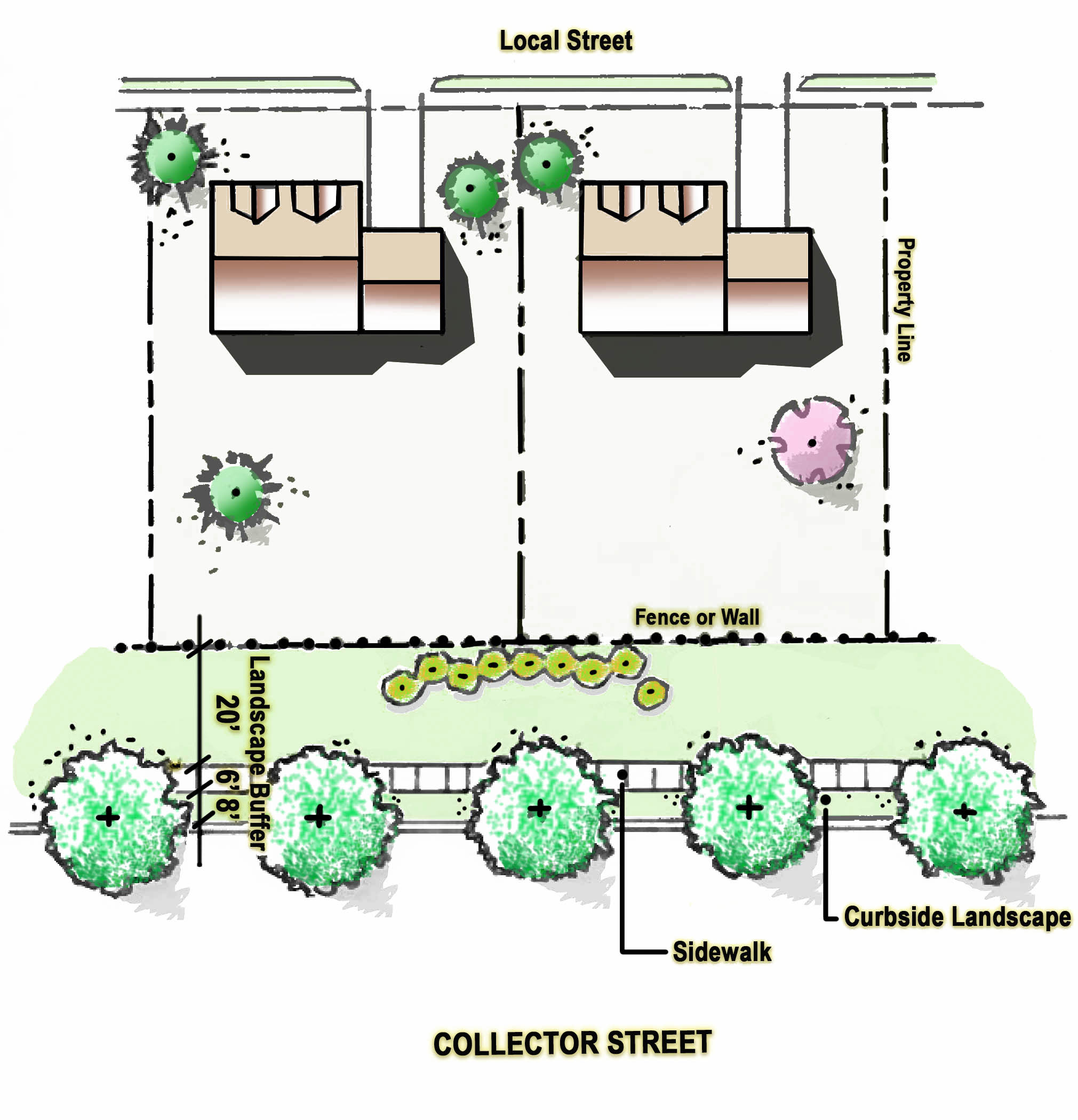
Figure 4.7-17: Collector Street Frontage Buffer Measurement Detached Straight Walk
3. Minimum Plant Material Quantities.
a. Along Public or Private Rights-of-Way.
i. All required street frontage landscape buffers shall contain a minimum of one tree and 10 shrubs per 40 linear feet. Where single-family detached residential or multifamily residential abut an arterial or collector street, 50 percent of the trees provided shall be evergreen species. Buffer widths shall be in accordance with Table 4.7.2.
While shrubs may be provided as equivalents for trees as listed in Section 146-4.7.3.B(7), perennials may not be used as equivalents to meet screening requirements. Perennials may be provided as accents but may not count toward the minimum plant quantities. Shrubs and ornamental grasses may only be substituted for trees if the applicant demonstrates to staff that the site is encumbered.
ii. Encumbrances shall include overhead and underground utilities, floodplain, easements, or the like. Self-imposed encumbrances such as drainage swales shall not be deemed encumbrances. Minimum required buffer depths and plant materials shall be required. Plant material shall be a combination of evergreen and deciduous trees and shrubs. Shrubs shall be chosen based upon their ability to provide appropriate screening and shall reach minimum mature height of between three to four feet. No more than 20 percent of the buffer plant material shall be ornamental grasses due to their limited buffering ability during the late fall through summer months. See Figure 4.7-18.
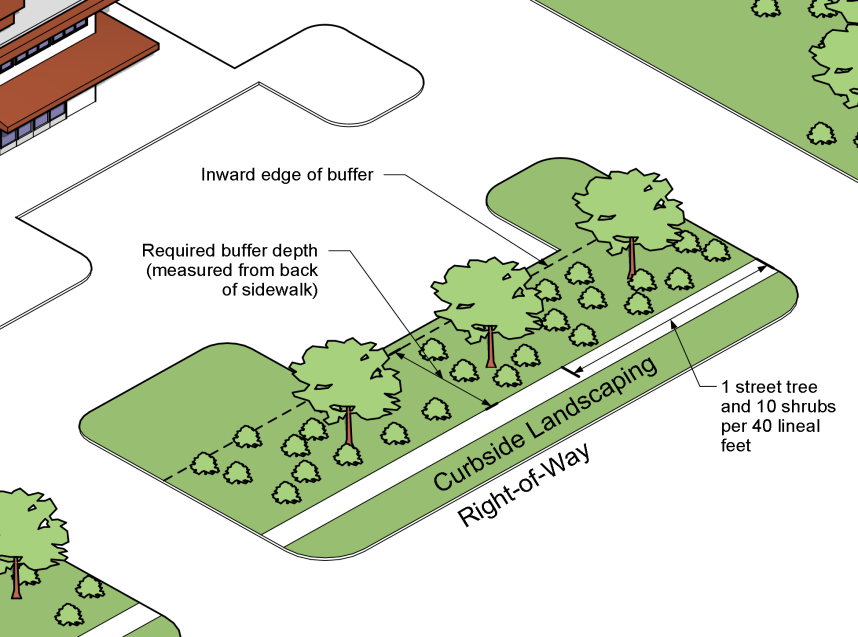
Figure 4.7-18: Street Frontage Landscape Buffer
4. Planting Design. Buffer plant material may not be concentrated in one location within the buffer, but shall be distributed to provide the necessary screening along its entire length. A minimum eight foot wide planting bed shall be maintained from the face of a wall or fence.
5. Encroachments into Buffers. No buildings or portions of buildings including drive lanes, detention ponds, parking stalls, dumpsters, or dumpster enclosures may intrude into the minimum required buffer.
6. Exceptions for Subarea A.
a. Street frontage buffers shall not be required for single-family detached, single-family attached, or two-family front yards and corner side yards visible from public view.
b. Street buffers are not required adjacent to public or private park land.
c. Properties in the MU-OA zone district area not required to comply with the street frontage buffer standards in this Section 146-4.7.5.D but are required to comply with the standards in Section 146-2.4.4 (Mixed-Use -- Original Aurora District (MU-OA).
d. Properties within the Havana Overlay District shall not be required to comply with the street frontage buffer standards within this section, with the exception that grasses and perennials may not be provided as shrub equivalents for trees. Shrubs may only be provided as equivalents for trees when the site is encumbered. Encumbrances shall include overhead and underground utilities, floodplain, easements, or the like. Self-imposed encumbrances such as drainage swales shall not be deemed encumbrances. Minimum required buffer depths and plant materials shall be required. Plant material shall be a combination of evergreen and deciduous trees and shrubs. Shrubs shall be chosen based upon their ability to provide appropriate screening and shall reach a minimum mature height of between three to four feet. No more than 20 percent of the buffer plant material shall be ornamental grasses due to their limited buffering ability during the late fall through summer months. All other street frontage buffer requirements shall be required to comply with the standards in Section 146-2.6.7 (Havana Street Overlay (-HSO)).
e. The MU-OA, MU-FB, MU-TOD, and MU-R zone districts call for intensive types of development that might be associated with an urban center, transit oriented development or main street. Such districts emphasize pedestrian friendly design, traditional main streets, mixing of uses and the creation of unique places. Development in such places is often characterized in part by relatively short blocks, narrow lots and narrow to zero building setbacks on the fronts and sides of the lots. Strict adherence to the requirements for setbacks or buffers as described in this UDO could limit the achievement of the purposes of such districts. Such development can benefit from flexibility in otherwise generally applicable zoning standards. The Planning Director may approve a modification of street frontage buffer standards in these zone districts pursuant to Section 146-5.4.4.F (Administrative Adjustments).
7. Exceptions for Subareas B and C.
a. All development and redevelopment shall meet the street frontage buffer requirements except when residential uses abut an arterial and collector street whose buffer depths shall be measured from the flow line. Refer to Figures Figure 4.7-14: Arterial Street Frontage Buffer Measurement Detached Straight Walk through 4.7-17.
b. When a tract platted as a private common space tract is 20 feet or less in depth and separates the rear lot lines of a residential development from an arterial or collector street, then a street buffer is required meeting the standards of this Section 146-4.7.5.D and Figures 4.7-14 through 4.7-17 is required.
c. Where residential rear lots abut a private common space tract and the separation between the residential rear lot line and the arterial or collector street is greater than 20 feet, no street buffer is required, but the private common open space/tract landscaping standards in Section 146-4.7.5.I shall apply. See Figure 4.7-14.
d. Street frontage landscape buffers shall not be required for single-family detached, single-family attached, or two-family front yards and corner side yards visible from public view.
e. Street frontage landscape buffers are not required adjacent to public or private park land.
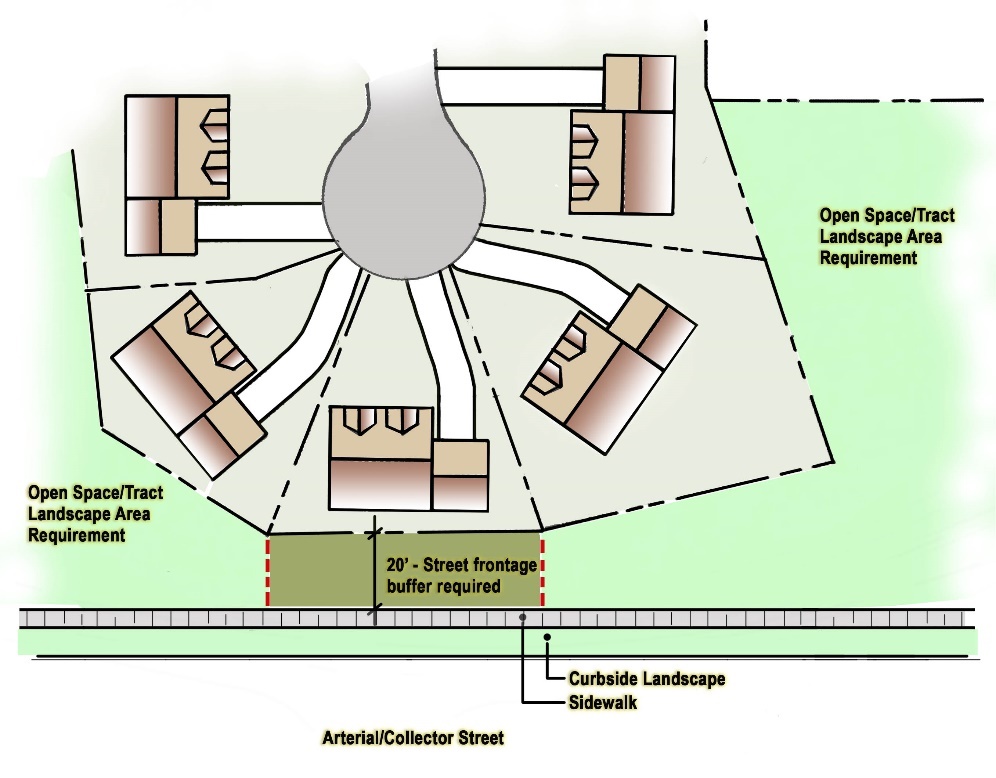
Figure 4.7-19: Street Buffer for Homeowners’ Association Tracts Abutting Public or Private Streets
8. Fence and Wall Placement.
a. Where screen walls and fences are placed within a street frontage buffer, they shall be placed at the inward edge of the buffer or berm and shall not be used to reduce the buffer width to a distance less than the prescribed buffer or to prohibit the installation of the required landscaping unless permitted as stated in Table 4.7-2. Required buffer plantings shall be installed on the exterior or street-facing side of the buffer.
b. If a wall or fence is provided along the rear property lines of residential homes along a street frontage, the required landscape buffer shall be provided within a designated lot or tract owned by a homeowners’ association or Title 32 District. The tract containing the buffer and the plant material shall be located on the exterior or street-facing side of the wall or fence. Access for future maintenance and irrigation shall be provided by the property owner, homeowners’ association, or Title 32 District.
c. If a wall or fence is provided along the rear property lines of residential homes along a street frontage and there is a designated easement abutting the rear lots, a landscape buffer shall be provided within the developer’s property or within a separate dedicated easement behind the public right-of-way approved by the Planning Director as consistent with other easements and service requirements. Access for future maintenance and irrigation shall be provided by the property owner, homeowners’ association, or Title 32 District.
d. Side yard fences and walls placed at corner lots of single-family, two-family, and single-family detached homes may be placed at the minimum fence setback line allowed by Section 146-4.7.9 (Fence and Wall Regulations).
e. For fence and wall setback and material requirements along arterial, collector and other public and private streets and alleys, see Section 146-4.7.9 (Fence and Wall Regulations).
E. Non-Street Perimeter Buffers.
1. General.
a. Non-street perimeter buffers occur along property lines with no street frontages. Non-street perimeter buffer requirements within the MU-OA zone district shall focus on screening surface parking lots, loading areas and drive-through lanes.
b. All new development or redevelopment proposed adjacent to dedicated public park land and open space areas, including trail corridors, within Subarea A, B or C shall provide the required buffer in accordance with the Section 146-4.7.5.H (Special Landscape Buffers for Development Adjacent to I-70, I-225, E-470, Public Parks, Open Space, and Trails).
c. Plant material shall be a combination of evergreen and deciduous trees and shrubs. Shrubs shall be chosen based upon their ability to provide appropriate screening and shall be selected to reach a mature height of between four and five feet. While upright junipers are commonly used for buffers, alternative plant materials shall be integrated that are better suited to winter snow loads and provide year round visual interest such as the following:
i. Evergreen Trees: Compact White Spruce, Bakeri and Fastigiata Spruce, Emerald Arrow and Mint Truffle Bosnian Pine, Columnar Austrian Pine
ii. Deciduous Trees: Columnar oaks, upright Norway Maple, Tallhedge Buckthorn, Tower Poplar, Columnar Purple Plum
2. Plant Quantities.
a. Commercial and Industrial Buffers.
i. Commercial or industrial buffers adjacent to commercial, industrial, or other non-residential developments shall include one tree and five shrubs per 40 linear feet of buffer. At least 30 percent of the tree species shall be evergreen.
ii. Commercial and industrial buffers proposed adjacent to residential development shall include one tree and five shrubs for each 25 linear feet of buffer and 50 percent of the trees shall be evergreen species.
iii. Plant sizes shall be increased to three-inch caliper for deciduous shade trees and eight feet tall for evergreen trees between non-residential and residential uses.
iv. While shrubs may be provided as equivalents for trees as listed in Section 146-4.7.3.B(7), perennials may not be used as equivalents to meet screening requirements. Perennials may be provided as accents but may not count toward the minimum plant quantities. Shrubs and ornamental grasses may only be submitted for trees if the applicant demonstrates to staff that the site is encumbered.
Encumbrances shall include overhead and underground utilities, floodplain, easements, or the like. Self-imposed encumbrances such as drainage swales shall not be deemed encumbrances. Minimum required buffer depths and plant materials shall be required. No more than 20 percent of the buffer plant material shall be ornamental grasses due to their limited ability to buffer during the late fall through summer months.
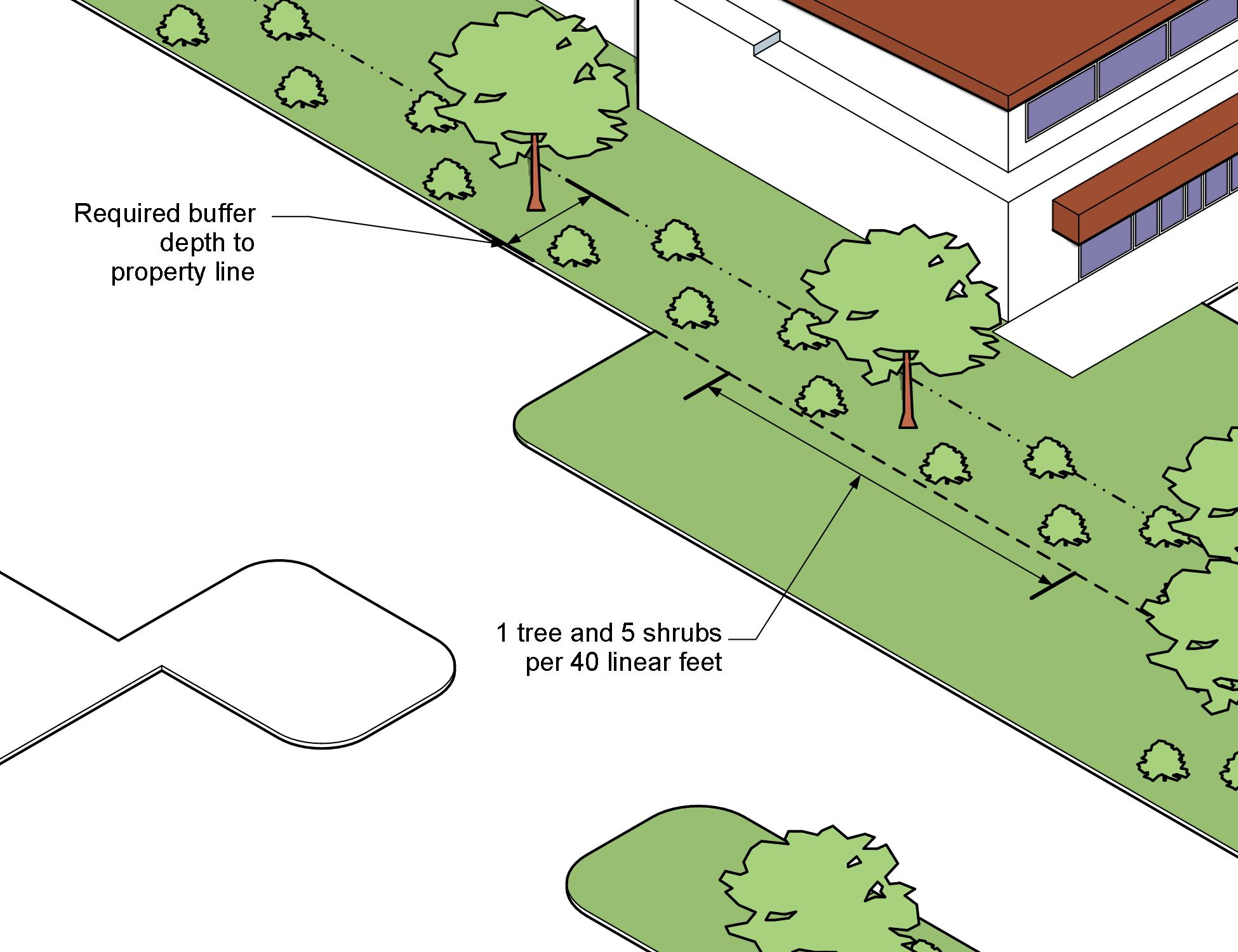
Figure 4.7-20: Commercial and Industrial Uses Adjacent to Commercial and Industrial Uses
b. Residential Buffers.
i. Residential development proposed adjacent to industrial, commercial, commercial mixed-use properties, and all other non-residential properties shall include one tree and five shrubs for each 25 linear feet of buffer and 50 percent of the trees shall be evergreen species. See Figure 4.7-21.
ii. When multifamily dwellings are located abutting lots containing any Household Living use listed in Table 4.3-1, the multifamily dwelling use shall provide one tree and five shrubs for each 40 linear feet of buffer.
iii. Plant sizes shall be increased to three inch caliper for deciduous shade trees and eight feet tall for evergreen trees between non-residential and residential uses.
iv. While shrubs may be provided as equivalents for trees as listed in Section 146-4.7.3.B(7), perennials may not be used as equivalents to meet screening requirements. Perennials may be provided as accents but may not count toward the minimum plant quantities. Shrubs and ornamental grasses may only be submitted for trees if the applicant demonstrates to staff that the site is encumbered.
Encumbrances shall include overhead and underground utilities, floodplain, easements, or the like. Self-imposed encumbrances such as drainage swales shall not be deemed encumbrances. Minimum required buffer depths and plant materials shall be required. No more than 20 percent of the buffer plant material shall be ornamental grasses due to their limited ability to buffer during the late fall through summer months.
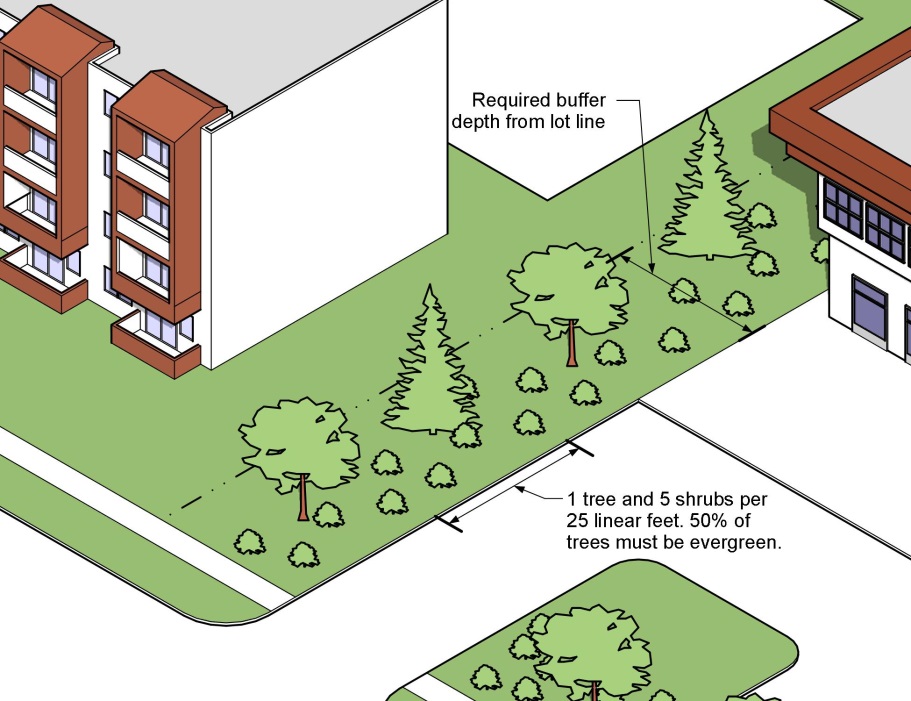
Figure 4.7-21: Residential Uses Adjacent to Non-residential Uses
3. Buffer Exceptions for Subareas A, B, and C. The following exceptions apply to development on individual lots or parcels.
a. Non-street perimeter buffers shall not be required between the same or differing land uses within multiple phases of a single approved Master Plan.
b. Non-street perimeter buffers shall not be required between the same land use categories, as shown in Table 146-3.2-1 (Permitted Use Table) located in two adjacent approved Master Plans.
c. Alternatives to non-street perimeter buffers adjacent to active rail lines may be approved on a case-by-case basis if the Planning Director determines that compliance with standards of this Section 146-4.7.5.E (Non-street Perimeter Buffers) is impracticable due to rail-related maintenance operations associated with vegetative management. Approved alternatives shall meet one of the following standards, or a combination of them, as approved by the Planning Director:
i. Required plant material for the buffer shall be distributed elsewhere on site; or
ii. A minimum of 30 percent of the required plant material required to comply with other landscaping standards in this Section 146-4.7 (Landscape, Water Conservation, Storm water Management), including but not limited to street perimeter, building perimeter, or detention pond landscaping, shall be upsized to compensate for the missing buffer plant material.
d. Within the MU-OA zone district, proposed development and redevelopment shall be exempt from required non-street perimeter buffer standards in Table 4.7-2. Instead, all developments and redevelopments shall comply with the buffer requirements as defined in Tables 2.4-8 and 2.4-9 in Section 146-2.4.4.
4. Encroachments into Buffers. No buildings or portions of buildings including drive lanes, structured or unstructured detention ponds, parking stalls, dumpsters, or dumpster enclosures may encroach into the minimum required buffer.
5. Fence and Wall Placement.
a. Where screen walls and fences are permitted between property lines, they shall be placed at the inward edge of the buffer and shall not be used as a mechanism to reduce the buffer width less than required or prohibit the installation of the required landscaping unless permitted as stated in Table 4.7-2.
b. Fences and walls may be used in combination with berming in order to negate the appearance of fence and wall canyons. Fences shall be on the inward side of the berm or buffer with plant material placement on the exterior side of the wall or fence.
c. If a wall or fence is chosen as a buffer reduction feature or for the screening of outdoor storage and the adjacent property has an existing fence or wall, the installation of a new fence or wall may be approved by the Planning Director on a case-by-case basis to ensure maintenance access between the two fences. If approved, landscape shall be located on the interior side of the proposed wall or fence, or distributed to other areas of the site, as approved by the Planning Director based on effectiveness as a visual buffer and appearance from abutting streets or lots. Access for future maintenance and irrigation shall be provided by the property owner, homeowners’ association, or Title 32 District.
d. If the Planning Director determines that an existing fence on an adjoining lot may be used as a buffer reduction feature, the Director may require that the amount of buffer plant material being installed by the new development be increased in order to provide the same level of visual and sound buffering that would have been achieved through the installation of a second wall or fence.
F. Required Landscape Buffer Widths and Allowed Reductions. Buffer widths may be reduced when landscape incentive features are provided in addition to landscaping requirements otherwise required by this UDO. The required landscape buffer widths and permitted reductions in the Table below apply to all portions of Subareas A, B, and C except the following:
1. The MU-OA zone district.
2. If a required buffer width is already located between a proposed residential use and multifamily or a non-residential use, then the residential development shall only be required to provide one-half the standard buffer width. Required plant quantities shall remain the same.
G. Buffer Widths and Allowed Reduction Table.
1. All development and redevelopment shall comply with the provisions of Table 4.7-2 unless an exception or alternative standard is included in this UDO.
|
Table 4.7-2 Required Landscaping Buffer Widths and Allowed Reductions (N.A. = not applicable) |
|||||
|---|---|---|---|---|---|
|
Residential [1] |
Multifamily |
Institutional [2] |
Office, Commercial and Mixed-Use |
Industrial |
|
|
STANDARD DESIGN [3] Plant material quantities per code requirements. Standard design means without buffer reduction incentive features. |
|||||
|
At ROW [4] [5] [6] |
N.A. |
20 feet |
10 feet |
20 feet |
Arterial ROW: 25 feet Other Public ROW: 10 feet |
|
At adjacent residential property lines |
N.A. |
15 feet |
25 feet |
25 feet |
25 feet |
|
At adjacent multifamily property lines |
15 feet |
15 feet |
25 feet |
25 feet |
20 feet |
|
At adjacent non-residential property lines |
25 feet |
25 feet |
25 feet |
10 feet |
18 feet |
|
Adjacent to E-470, I-225, and I-70 |
25 feet |
25 feet |
25 feet |
25 feet |
25 feet |
|
Adjacent to Parks & Open Space [7] |
N.A. [8] |
25 feet |
25 feet |
25 feet |
25 feet |
|
INCENTIVE FEATURES TO REDUCE BUFFER WIDTHS [9] Low Hedge or Berm with Hedge Hedge: 3 to 4 foot high hedge planted in a triangular pattern in a double row with shrubs three feet on center. Berm: Must be a minimum of 3 feet in height. Slope no steeper than 1:3 rise: run. Berm to include the above noted hedge plant material. |
|||||
|
At ROW |
N.A. |
18 feet |
9 feet |
15 feet |
Arterial ROW: 25 feet Other Public ROW: N.A. |
|
Low Wall Standard design plus 3 to 4 foot high masonry wall with landscaping on exterior side. |
|||||
|
At ROW |
N.A. |
15 feet |
6 feet |
10 feet |
Arterial ROW: 25 feet Other Public ROW: N.A. |
|
Tall Landscape Screen [10] Tall landscape screen shall consist of one of the following: (1) A mixture of evergreen shrubs planted 42" on center and deciduous trees planted 25' on center; (2) A row of evergreen trees planted no less than 20' - 25' on center with deciduous and evergreen shrubs interspersed. |
|||||
|
At ROW |
N.A. |
N.A. |
N.A. |
N.A. |
Arterial ROW: 25 feet Other Public ROW: 8 feet |
|
At adjacent residential property lines |
N.A. |
12 feet |
20 feet |
20 feet |
20 feet |
|
At adjacent multifamily property lines |
12 feet |
10 feet |
20 feet |
20 feet |
18 feet |
|
At adjacent non-residential property lines |
20 feet |
20 feet |
20 feet |
5 feet |
15 feet |
|
Adjacent to E-470, I-225, and I-70 |
20 feet |
20 feet |
20 feet |
20 feet |
20 feet |
|
Fences [11] [12] Standard design plus six-foot fence per the fence code Section 4.7.9 with landscaping on exterior side |
|||||
|
At ROW |
20’ [10] |
N.A. |
N.A. |
N.A. |
Arterial ROW: 25 feet Other Public ROW: 8 feet |
|
At adjacent residential property lines |
N.A. |
10 feet |
18 feet |
18 feet |
18 feet |
|
At adjacent multifamily property lines |
10 feet |
10 feet |
18 feet |
18 feet |
18 feet |
|
At adjacent non-residential property lines |
18 feet |
18 feet |
18 feet |
5 feet |
12 feet |
|
Adjacent to E-470, I-225, and I-70 |
20 feet |
20 feet |
20 feet |
20 feet |
15 feet |
|
Masonry Walls Standard design plus six-foot masonry wall with landscaping on exterior side |
|||||
|
At ROW |
20' [11] |
N.A. |
N.A. |
N.A. |
Arterial ROW: 25 feet Other Public ROW: 6 feet |
|
At adjacent residential property lines |
N.A. |
N.A. |
12 feet |
15 feet |
12 feet |
|
At adjacent multifamily property lines |
N.A. |
N.A. |
12 feet |
12 feet |
12 feet |
|
At adjacent non-residential property lines |
15 feet |
12 feet |
12 feet |
N.A. |
N.A. |
|
Adjacent to E-470, I-225, and I-70 |
15 feet |
15 feet |
15 feet |
15 feet |
15 feet |
|
[1] Includes all residential uses listed in Table 3.2-1 (Permitted Use Table) except multifamily dwellings. |
|
[2] Includes all institutional uses listed in Table 3.2-1 (Permitted Use Table) except parks and open spaces. |
|
[3] Standard design refers to the required plant material per linear foot of required buffer. |
|
[4] Buffer reductions are not permitted for industrial developments along arterial streets. |
|
[5] When an Urban Street Frontage is proposed, with no intervening vehicular area between the building and street, no street frontage buffers are required. |
|
[6] Where the rear lots of single-family detached and multifamily abut an arterial or collector roadway, a 20-foot-wide landscape setback is required in accordance with Section 146-4.7.9.H. Buffer reductions are not permitted for multifamily dwelling units adjacent to arterial and collector streets. |
|
[7] Buffer reductions are not permitted adjacent to parks, trails, or open space. |
|
[8] Single-family residential developments are exempt from the 25-foot buffer except under those circumstances noted in Section 146-4.7.5.H(2)(b)(iii). |
|
[9] Landscape plant material quantities shall remain the same regardless of any approved reduction in buffer width. |
|
[10] For a tall landscape screen, deciduous trees and evergreen trees shall mature to a height of 15-25 feet tall, and shrubs shall mature to an average height of five feet tall. If option 2 in Table 4.7-2 is chosen, then 50 percent of the buffer trees shall be evergreen species. |
|
[11] Fences and masonry walls shall not be permitted as a buffer reduction feature installed along the rear lots of homes adjacent to arterial and collector streets. |
|
[12] Parallel fencing along adjoining properties shall be avoided to the maximum extent practicable to avoid inefficiencies in maintaining either fence. If two parallel fences are necessary, a minimum separation of 10 feet shall be maintained for maintenance purposes. |
2. The incentive features listed in Table 4.7-2 are illustrated below.
a. Hedge

b. Berm with Hedge

c. Low Wall
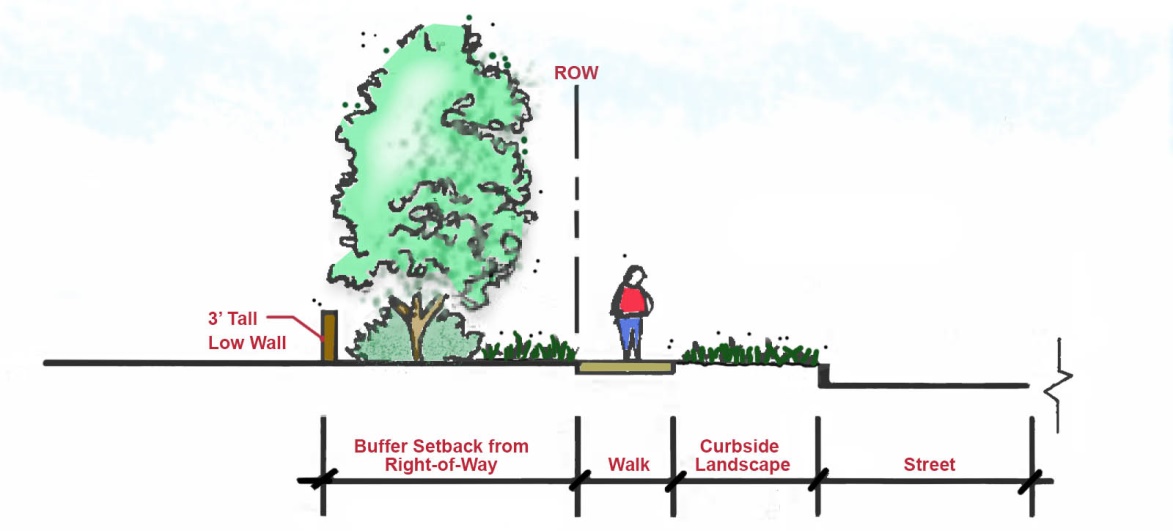
d. Tall Landscape Screen

e. Fence and/or Masonry Wall

H. Special Landscape Buffers for Development Adjacent to I-70, I-225, E-470, Public Parks, Open Space, and Trails.
1. General.
a. The following additional standards apply to development adjacent to E-470, I-225, I-70, and public parks, open space, and trails. The purpose of these standards is to require a level of landscape quality with aesthetic characteristics appropriate for areas with high public visibility based on the type of adjacent landscape and uses. If the standards of this Section 146-4.7.5.H conflict with other buffer requirements in Section 146-4.7, the provisions of this Section 146-4.7.5.H shall apply.
b. Landscaping shall include one tree and 10 shrubs per 25 linear feet of frontage when the site contains industrial development, and one tree and 10 shrubs per 30 feet when the site contains any other type of development.
c. The encroachment of buildings or portions of buildings including porches and patios, trash enclosures, dumpsters, parking lots and internal vehicular drives, sidewalks and detention and water quality pond infrastructure into landscape buffers is prohibited. Exceptions to this rule in the case of public parks, open space and trail buffers, including the provision of trail connections and sidewalks, may be made on a case-by-case basis by the Parks, Recreation and Open Space Department based on unique site conditions and alternatives to those impacts, including any proposed mitigation measures.
i. The provision of trail connections through public park, open space and trail buffers is generally permitted, but at those locations approved by the Parks, Recreation and Open Space Department based on trail connectivity, public safety, and appearance.
ii. Sidewalks which provide access to the primary entry to residential uses may be permitted in public park, open space and trail buffers, provided the sidewalk is set back a minimum of 10 feet from the property line of the adjacent park, open space or trail.
2. Buffer Standards for Areas Adjacent to Public Parks, Open Space, and Trails
a. These regulations apply to all development adjacent to public parks and open space areas and trails under the jurisdiction of the City, including lands that Title 32 Districts, homeowners’ associations, business associations, or other entities manage for public use and benefit to comply with City land dedication requirement for park and open spaces purposes.
b. The following buffer standards shall apply to buffer and screen public use areas and to minimize potential adverse impacts from adjacent land uses.
i. A 25 foot wide buffer shall be required, and plantings shall not encroach past the property line into the designated public use property.
ii. Buffer width reductions are not permitted for buffers adjacent to public open spaces, public parks, and public trails.
iii. Single-family detached residential developments shall be exempt from the buffer requirement, except when the rear yards of residential lots abut an open space or park that has sensitive natural features or is part of a special habitat area, in which case a buffer consistent with the protection needs of the resource or the planned ecological character for the habitat shall be required.
iv. The landscape design of buffers consisting of all living material including trees, shrubs, grasses, and groundcovers and non-living materials including boulders, cobble, rock, and wood chips/mulch and the proposed grading for buffers shall be coordinated with and approved by the Parks, Recreation and Open Space Department.
v. The Parks, Recreation, and Open Space Department may approve a landscape design having less plant material than required by the buffer standards based on the existing or proposed character and management objectives of the adjacent park, open space or trail, without the need for the applicant to obtain a Hardship Variance pursuant to Section 146-5.4.4.A or an Administrative Adjustment pursuant to Section 146-5.4.4.F.
vi. If a fence is proposed as an aesthetic enhancement or a functional element of a buffer, it must comply with standards of Section 146-4.7.9.K (Fences and Walls Along Open Space Tracts, Parks, Reservoirs, Golf Courses, Trails, and Drainage Ways.).
vii. If a wall is proposed to retain or transition surrounding grade as part of the buffer, the Parks, Recreation and Open Space Department may specify the material and method of construction to ensure compatibility with the character of the adjacent public use area. Walls must be contained within the buffer and not extend onto park or open space property.
viii. The Parks, Recreation, and Open Space Department may require that buffers be left undisturbed and be maintained and managed in a natural state to supplement an adjoining open space area or natural feature if resource management objectives support conservation of the acreage.
3. Buffer Standards for Areas Adjacent to the E-470 Multi-Use Easement
If not specifically stated in a Master Plan, buffer locations shall be determined by the E-470 Authority based upon the proposed use of their multi-use easement.
a. Outside the E-470 Multi-Use Easement. Required trees shall consist of large deciduous shade tree species and large evergreen tree species. At least 50 percent of required trees shall be evergreen species and shrubs may consist of tall deciduous species and evergreen species planted a minimum of five feet on center.
b. Within the E-470 Multi-Use Easement. Landscaping shall include a combination of dryland grasses, trees, and shrubs. A minimum of 50 percent of the required trees shall be evergreen species.
c. Spacing of Plantings. Like tree species may be grouped with spacing not less than 25 feet on center for small deciduous trees; 35 feet on center for large deciduous trees; and 15 feet on center for evergreen trees. The maximum distance between groups may not exceed 45 feet on center. Planting a single row of trees the full length of the buffer is prohibited. Shrubs shall be massed and planted between the tree groups.
I. Private Common Open Space/Tract Landscaping.
1. General. In all development, areas of land that have been disturbed during construction and are required or designated to be preserved and protected from future development for non-public active and passive recreation areas and facilities, trails, wildlife habitat, or the preservation of view corridors and natural land features, shall be landscaped in accordance with Subsections 2 and 3 below.
2. Minimum Plant Material Quantities. All private common open space not defined as street buffers shall contain a minimum of one tree and 10 shrubs (or the approved tree and shrub equivalents as listed in Section 146-4.7.3.B.7 per 4,000 square feet.
3. Exceptions. The calculation of required plant material in such open spaces excludes areas of the 100 year floodplain, floodways, lakes and ponds, undisturbed marshes, wetlands and detention and water quality ponds.
J. Building Perimeter Landscaping.
1. General. Building perimeter landscaping shall be required for multifamily, single-family attached (townhouse), and non-residential developments. Plantings shall be arranged to screen utility hardware and mechanical equipment, define entrances, and soften featureless walls. Building perimeter landscaping shall be located in conjunction with site furniture in order to enhance entrances. Trees and/or tall growing shrub species shall be located within shrub beds at building corners, primary entrances and along expanses of walls. Sites having expansive soils requiring specialized landscaping, irrigation techniques and concepts in order to comply with these standards shall not be exempt from building perimeter landscape requirements found in this Section.
2. Non-residential and Mixed-Use Structures.
a. Requirements. Building perimeter landscaping is required for all non-residential buildings in Subareas A (excluding the MU-OA zone district), B and C when said building elevations face public streets, transportation corridors, public open space, residential neighborhoods, or whenever an entrance door is present. Applicants shall provide one tree or tree equivalent for each 40 linear feet of elevation length. Measurements are not cumulative but shall be measured per side of the building
i. Ornamental grasses may comprise up to 25 percent of the total shrub requirement.
b. Exceptions. Urban Street Frontages and portions of building perimeters occupied by service and/or loading dock doors are not required to comply with this Section 146-4.7.5.J.
c. Types and Locations.
i. Building perimeter landscaping shall be located within 20 feet of the building face unless prevented by loading docks.
ii. Building perimeter landscaping may be installed in plant beds or raised planters. Plant beds located adjacent to building foundations shall be a minimum of five feet wide. The length shall be determined by the number of plants that are needed to meet code requirements. Planters shall be sized to accommodate the required plantings and ensure survivability.
iii. Containers shall be constructed of materials that are durable, compatible, and complement the architecture of the building. The number of required containers shall be based on tree equivalents as found in this Section.
iv. Landscaped parking lot islands located within 20 feet of the building elevation may be counted towards building perimeter landscaping.
d. Parking Structures.
i. Subarea A. The installation of perimeter landscape around parking garages for infill and redevelopment sites is not always feasible due to existing site constraints. When this occurs, the applicant shall provide architectural enhancements to the parking structure in the form of decorative, ventilated walls and grill work to effectively obscure automobile and interior lighting from the exterior. Refer to Section 146-4.6.5.E (Parking Garage Design) for further suggested buffer/landscape treatments.
ii. Subareas B and C. Architectural enhancements such as screen and landscape walls as well as art may be used in combination with foundation plantings to create a highly effective buffer and screen. Plant quantities, types, and locations shall comply with standards as noted in Subsections 2.a and 2.c above. Landscaping shall be required along all building faces. If overlapping landscape requirements occur such as building perimeter, street and non-street frontage buffers, the more restrictive requirement shall be applicable and may count for meeting both requirements.
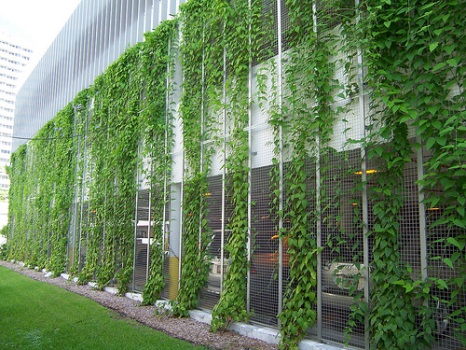
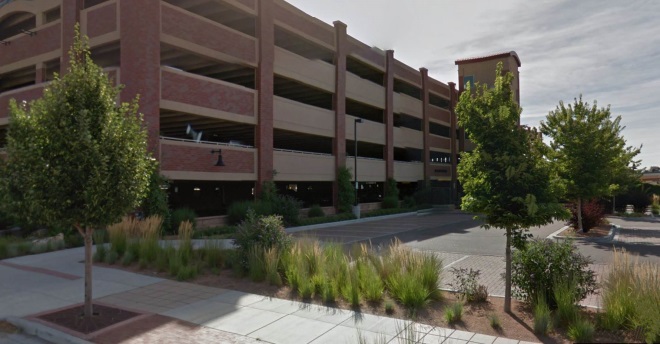
3. Multifamily and Single-family Attached (Townhome) Residential Structures.
a. Requirements. Building perimeter landscaping is required for all multifamily and single-family townhome residential dwellings. Landscaping shall consist of a variety of plant material that will ensure seasonal interest.
b. Types and Locations.
i. Plant beds shall be an average of six feet wide and shall consist of landscaping, mulch, and metal edging. Edger shall be provided when adjacent to turf and rock mulched areas.
ii. Perimeter plantings shall consist of a total number of plants equal to 1.25 plants per five linear feet of unit perimeter footage, of which:
(a) At least five percent are a mixture of evergreen and deciduous trees;
(b) At least 15 percent are tall shrubs with a mature height of at least six feet; and
(c) Up to 80 percent are a mixture of evergreen and deciduous shrubs chosen to create seasonal interest. See Figure 4.7-22.

Figure 4.7-22: Building Perimeter Landscaping
c. Garages. For projects with detached garages or carports, landscaped islands a minimum of five feet in width shall be provided along the full width of both ends of the garages and/or carports. See Figure 4.7-23.
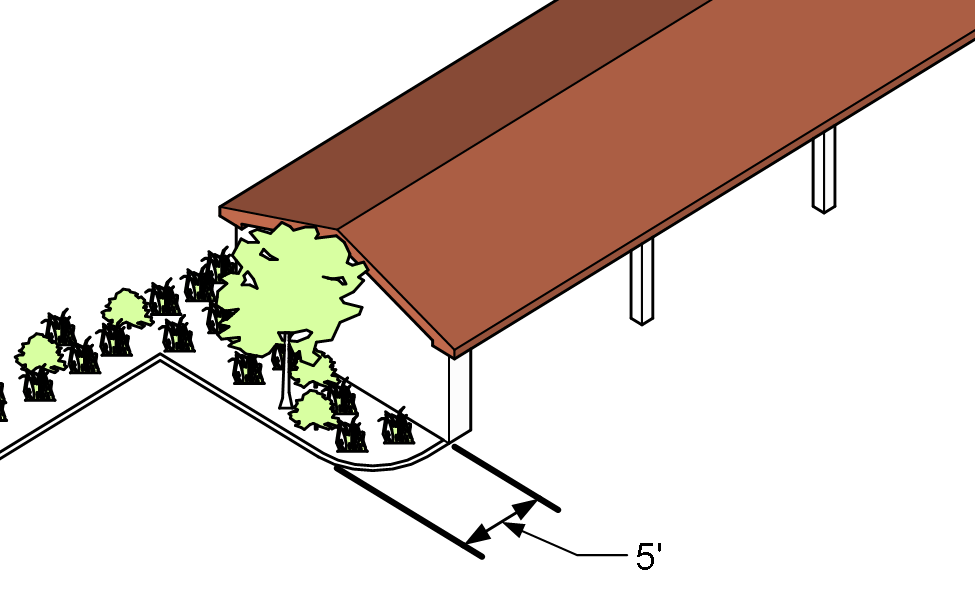
Figure 4.7-23: Perimeter Landscape for Detached Garages or Carports for Multifamily and Single-Family Attached Uses
K. Parking Lot Landscaping. The following standards apply to surface Parking Lots. Parking Garages shall comply with Section 146-4.7.5.J (Building Perimeter Landscaping).
1. General.
a. Internal parking lot landscaping shall be required for parking lots containing more than 10 parking spaces.
b. Screening of parking lots is required in all Subareas, and zone districts, and is not dependent upon the number of parking stalls or parking lot size.
c. Trees shall not be eliminated due to the placement of light poles in parking lot islands or parking lot perimeter landscaping.
d. No interior portion of a parking lot may contain turf, native seed, or artificial turf.
e. Parking lot landscaping MU-OA zone district shall focus on perimeter screening of the parking lot. Trees shall be provided, at a minimum, at the ends of parking rows on the exterior or perimeter of the parking lot. Interior parking lot landscaping shall be approved by the Planning Director on a case-by-case basis to balance the need for landscaping consistent with the purpose of the MU-OA zone district with the competing requirements for fire lanes, adequate parking, access and development potential of small infill and redevelopment parcels.
2. Parking Lot Layout.
a. All surface parking lots shall comply with the park standards in Section 146-4.6.5.D (Parking Lot Layout and Design).
b. To the extent consistent with other standards in this UDO and to the maximum extent practicable, all surface parking lots shall be designed to minimize negative visual impacts from adjacent primary roadways and properties.
c. To the maximum extent practicable, on-site drainage shall be integrated into the parking lot planting islands and perimeter planting areas as a means of treating storm water for water quality purposes in accordance with Public Works and Aurora Water criteria and Figure 4.7-24.
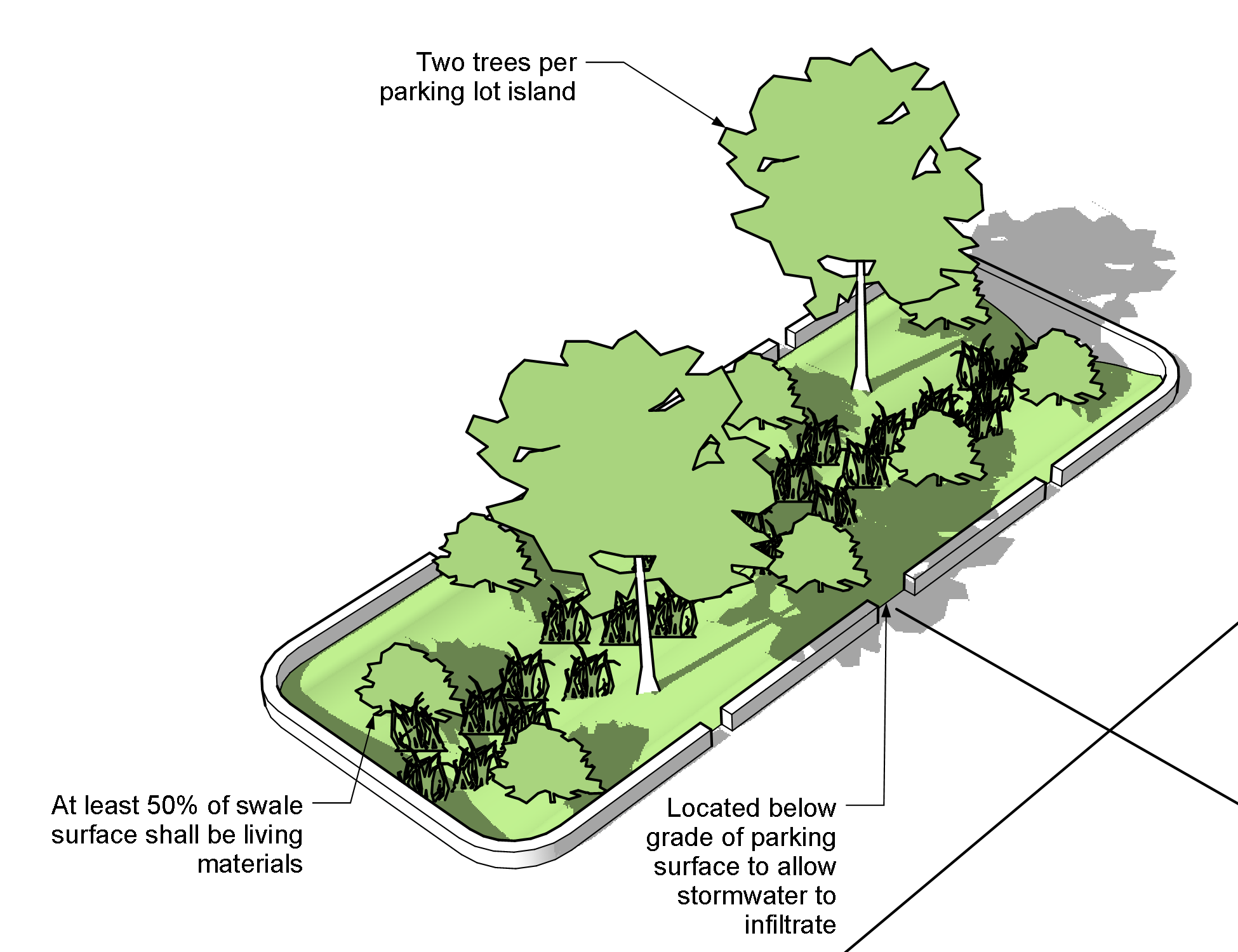
Figure 4.7-24: Parking Lot Stormwater Treatment Design
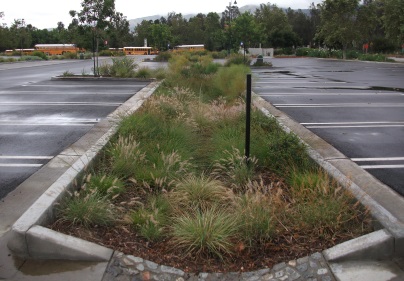

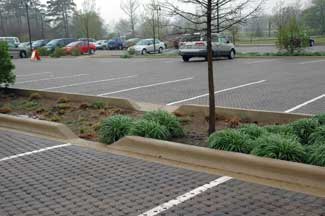
3. Interior Parking Lot Landscaping.
a. No parking row shall exceed 15 parking spaces without an intervening landscaped island, median or landscaped peninsula.
b. All rows of parking spaces shall be provided with a terminal landscape island to protect parked vehicles, provide visibility, confine moving traffic to aisles and driveways, and provide space for landscaping.
c. Each landscaped island shall be protected by raised concrete curbs, which shall include openings at grade as necessary to allow storm water to flow into any below grade landscaped swales. The planting area per tree shall be not less than nine foot by 19 foot for a single island and not less than nine foot by 38 foot for a double island. See Figures 4.7-24 through 4.7-26.
d. Interior parking lot islands shall be provided with a minimum of one canopy shade tree per nine foot by 19 foot island and two canopy shade trees per nine foot by 38 foot double island.
e. Ornamental trees may be used as accents at the ends of parking rows, but shall not be used as the primary shade tree within the parking lot.
f. In addition to trees, grasses (maximum 30 percent per island) and shrubs shall be provided at a ratio of six plants per nine-by-19-foot island or 12 plants per nine-by-38-foot island. Plant materials shall be sited appropriately to not exceed the confines of the planting area. Perennials may be provided as accents but may not be used to satisfy the parking lot island landscape requirements.
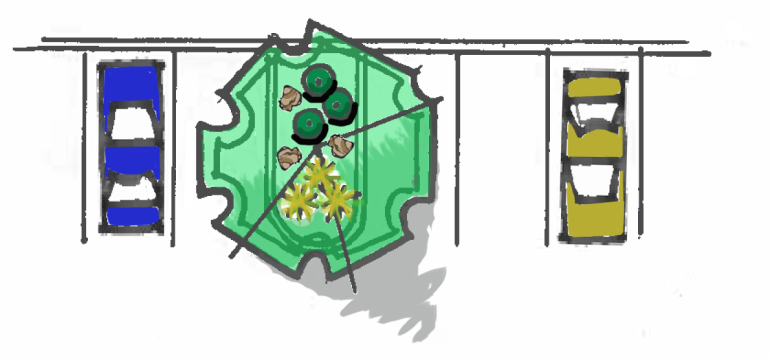
Figure 4.7-25: 9 foot by 18 foot Landscape Island Typical


Figure 4.7-26: 9 foot by 38 foot Landscape Island Typical

g. Landscaped islands may be mulched with either wood or rock mulch. The use of white rock mulch or crusher fines is prohibited. The use of crusher fines for pedestrian connectivity to an adjoining walk will be reviewed on a case-by-case basis.
h. No portion of the required parking lot island landscaping may be displaced by lighting, trash enclosures, recycling containers, transformers, fire hydrants, vacuum equipment or other mechanical equipment.
i. Where shared parking lots serve two or more adjacent lots, the requirements for perimeter landscaping between shall be determined by the Planning Director on a case-by-case basis to prevent parking lots on two adjacent lots from appearing as one large expanse of paving.
j. Solar panels may be installed in lieu of parking islands. Trees shall be required around the perimeter of the parking lot and in terminal islands at the ends of parking rows.
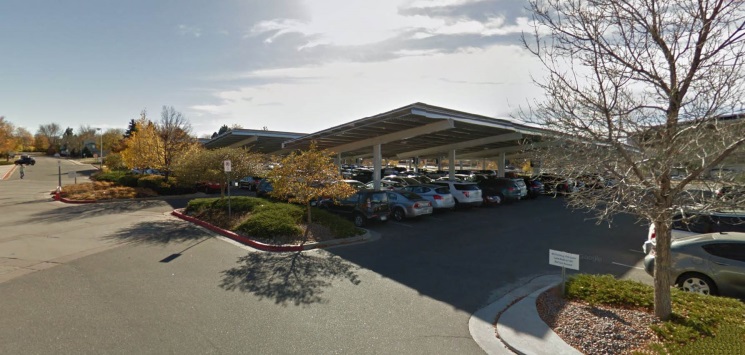
4. Parking Block Design.
a. No more than 120 parking spaces or two parking rows maximum. Provide a landscaped median 20 feet in width with a pedestrian walk. See Figure 4.7-27.
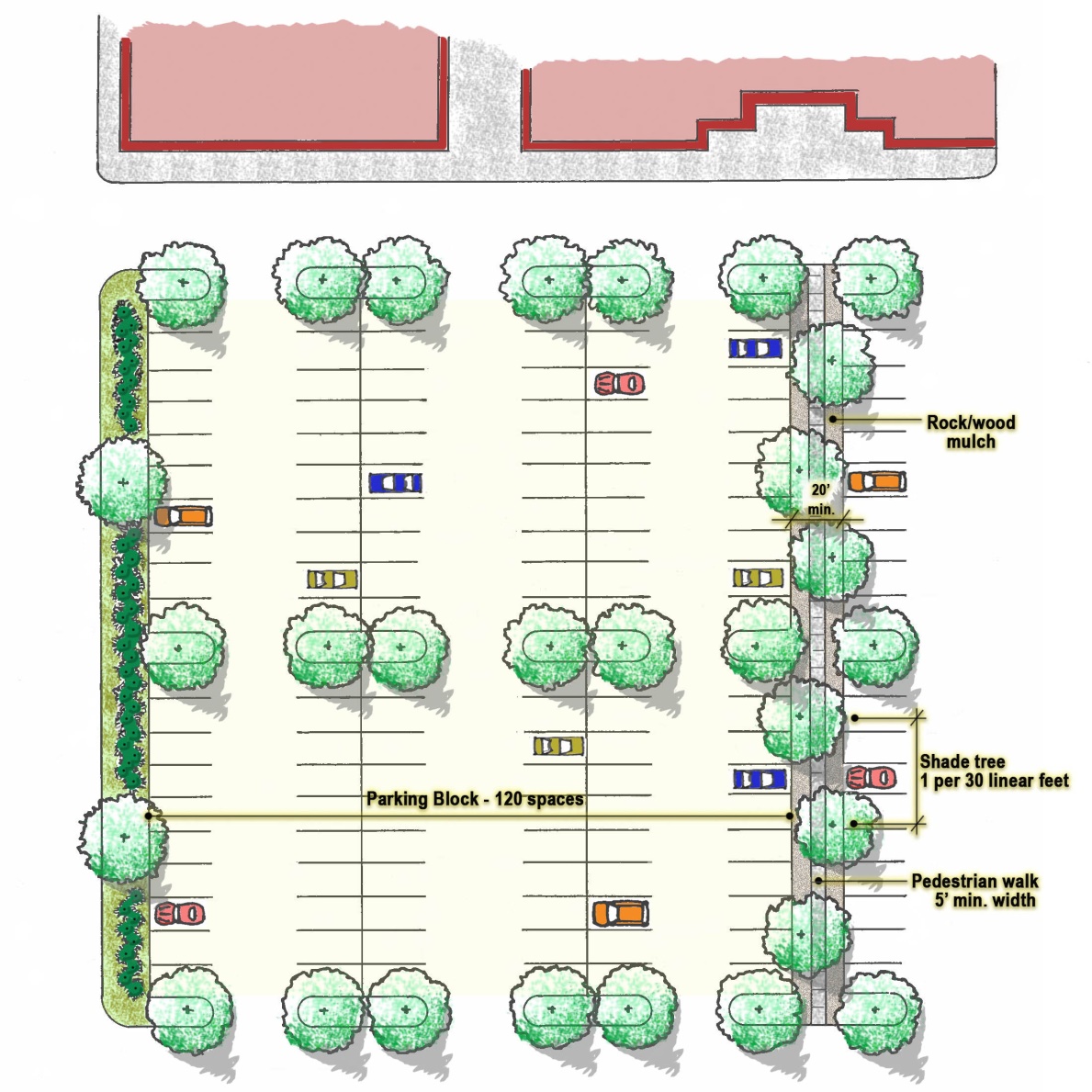
Figure 4.7-27: Landscape Areas in Surface Parking Lots


b. Parking lot medians shall be landscaped with one shade tree per 30 linear feet of median length and one or more understory treatments that may include mulch, mulched shrub beds or decorative rock mulch. Shrubs shall be provided at a ratio of six shrubs per 36 linear feet of median. Shrubs may be grouped.

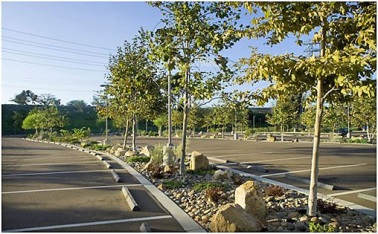
c. Landscaping shall be protected from vehicles by the placement of wheel stops, curbs, or other acceptable means. If wheel stops are not used, the landscape bed shall not be reduced by two or more feet to accommodate vehicle overhang. If a pedestrian walkway is used for vehicle overhang, then the walk shall be widened by two feet.
d. Whenever pedestrians must cross internal landscaped medians, the median shall be landscaped with a combination of hardscape materials and living plant material. Hardscape shall consist of concrete, modular pavers or decorative stamped and integral colored concrete.
5. Parking Lot Perimeter Screening.
a. Parking lots shall be visually screened along public rights-of-way, private streets, as well as from open space, and adjacent property. Such screening can be integrated into buffer requirements and is not in addition to such buffer requirements when the buffer and parking lot screening overlap with one another.
b. When not integrated as part of a required buffer, a minimum four foot buffer width shall be provided for screening around the perimeter of all parking lots.
c. Parking lots may be screened by one or more of the following methods:
i. A berm between three and four feet high with a maximum slope of 3 in1 in combination with evergreen and deciduous trees and shrubs. Screening shall be integrated with incentive features and streetscape plantings whenever possible.
ii. In lieu of berms, a low continuous landscaped hedge between three and four feet high consisting of a double row of shrubs planted 3 feet on center in a triangular pattern. See Figures 4.7-28 and 4.7-29.
iii. A decorative masonry wall three feet high in combination with shrubs, ornamental grasses, and perennials. Plant material shall be placed on the exterior side of the wall.
iv. Openings in screening may be permitted to allow access ways and for drainage purposes.
v. Plant material used for screening shall achieve required opacity within three years of construction of the vehicular use area to be screened.

Figure 4.7-28: Parking Lot Screening

Figure 4.7-29: A Low Wall in Combination with Landscaping to Screen the Parking Lot
d. Shrubs species shall be chosen that will reach a minimum height of three feet at maturity. At least 50 percent of the shrubs shall be deciduous flowering species. Whenever parking lots abut public open space plant materials shall be selected that are compatible with the natural character of the area.
e. Large shade and evergreen tree species and/or small trees or large shrub species shall be used as accents throughout the screen planting in conjunction with buffer and street frontage plantings to offset the horizontal lines of a typical shrub bed. At least one tree per 40 linear feet of parking lot perimeter.
f. Ornamental grasses shall not be used to screen parking lots.
6. Surface Parking Lots as a Primary Use. In addition to the standards in Subsections 1 through 5 above, surface parking lots as a primary use of land shall comply with the following standards. If the standards in this Section 146-4.7.5.K.6 conflict with standards in Subsections 1 through 5 above, the provisions of this Subsection 6 shall apply.
a. Interior Landscaping. Developments whose primary purpose is for outdoor recreational vehicle storage, car sales, or airport parking are exempt from these requirements or have modified interior parking lot landscape requirements as noted below.
i. Outdoor recreational vehicle storage and car sales
Only patron and/or employee parking areas are required to comply with the interior parking lot landscape requirements in Section 146-4.7.5.K.3.
ii. Airport parking.
(a) All parking rows shall be provided with a terminal landscaped island to protect parked vehicles, confine and direct moving traffic to aisles and driveways and provide space for landscaping.
(b) Terminal end islands shall be provided with a minimum of one canopy large shade tree per nine foot by 19 foot island and two canopy large shade trees per nine foot by 38 foot island. Large canopy shade trees shall be those that achieve a minimum crown width of 25 feet at maturity.
b. Perimeter Landscaping (Screening). A landscape buffer is required to provide the following types of screening for all outdoor recreational vehicle storage facilities, motor vehicle and light truck sales and rental facilities and airport-related parking lots:
i. Car Sales. Street and non-street frontage buffers shall be required for those portions of the development not being used for car sales/advertising immediately adjacent to a public or private street frontage and non-street frontage. Screening shall be provided in accordance with the required parking lot screening requirements and/or required non-street frontage buffer requirements as defined in Section 146-4.7.5.E (Non-Street Perimeter Buffers) and 146-4.7.5.K.5 (Parking Lot Perimeter Screening). For developments located within the Havana Overlay District, refer to Section 146-2.6.7 for street frontage landscaping requirements.
ii. Airport Parking Facilities. A landscape buffer shall be provided along the perimeter of all airport-related parking lots in accordance with the buffer requirements in Section 146-4.7.5.D (Street Frontage Landscape Buffers) and 146-4.7.5.E (Non-Street Perimeter Buffers). If a fence is installed for security, the fence shall be set back a minimum of 25 feet from the back of walk or property line. A 25 foot wide buffer shall be provided and the fence shall be placed on the inward edge of the buffer.
L. Site Entryways and Intersections.
1. Distinctive landscaped areas shall be provided at project entries and at intersections of public streets adjacent to proposed development, and those areas may be counted toward street buffer requirements. If specific guidance has not been provided within an approved Master Plan, then a design shall be provided at the time of Site Plan submission.
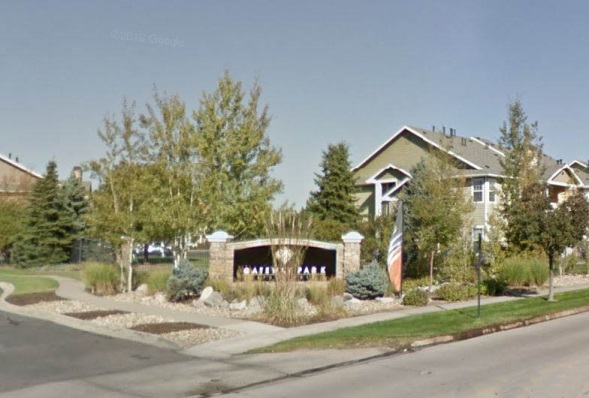
2. Entryway landscaping shall be installed within the MU-OA zone district to the maximum extent practicable given the existing site conditions and the extent of redevelopment occurring on each lot. Site entry landscaping shall consist of plant specimens having a high degree of visual interest during all seasons. A mixture of shrubs, flowers, and/or ground cover shall be planted around sign bases and at curb returns near site entrances, and shall be located in plant beds that are edged and mulched.
M. Detention and Water Quality Ponds.
1. General. Detention and water quality ponds shall be integrated physically, functionally and aesthetically into the total landscape design. Standing water shall be avoided to the maximum extent practicable, unless part of an existing recirculating water feature or located in wetland vegetated areas.
2. Slopes. Generally, vegetated slopes shall not exceed one foot of rise to three feet of run (3 to 1). All pond turf areas shall be properly drained. Any mowed slope that is within a public right-of-way or any area proposed to be maintained by the public shall be no steeper than one foot of rise to four feet of run (4 to 1). If retaining walls are installed, they shall comply with the standards in Section 146-4.7.9.T (Retaining Walls).
3. Pond Grading. Pond grading shall be designed to accommodate access for maintenance. Rockscaped or riprap slopes are only permitted when necessary for erosion control. All riprap areas not receiving direct flows shall be buried and seeded.
4. Landscape of Areas Surrounding Detention, Retention, and Water Quality Ponds. The area within the tract surrounding a pond shall contain a minimum of one tree and10 shrubs or the approved tree and shrub equivalents as listed in Subsection 2.1.1.A per 4,000 square feet above the 100 year water surface elevation. The 100 year water surface elevation shall be indicated on the landscape plan. The bottom of ponds shall be seeded and/or planted with water tolerant seed or plant materials that are capable of handling occasional water inundation. Plantings of willows and other wetland plant materials shall be included to the maximum extent practicable. The following areas may be deducted from tract square footage before calculating landscape requirements:
a. Area within 100-year floodplain.
b. Area within floodways.
c. Surface area of lakes and ponds.
d. Area within undisturbed marshes and wetlands.
5. Detention Ponds in Urban Landscapes. In the UC-TOD Core and MU-OA-MS subdistrict, detention, retention, and water quality ponds shall not be located adjacent to the street or back of walk unless the City Engineer determines that alternative on site or off-site locations are not available or are impracticable. All detention, retention, and water quality ponds shall be integrated physically, functionally, and aesthetically into the total landscape design.

N. Drive-Through Screening Adjacent to Street Frontages. A wall between 42 and 48 inches in height shall be provided to mitigate noise and minimize the visual impacts associated with on-site signs with speakers as well as screen drive-through aisles, service areas and stacking lanes from abutting public or private street rights-of-way. The wall shall match or complement the colors, materials and aesthetic theming of the main structure. Landscaping consisting of low shrubs shall be provided along the exterior or street side to soften the appearance of the wall. Screen walls may be located within any required buffer setbacks.
O. Medians. All medians in the public street rights-of-way that are to be maintained by the Parks, Recreation and Open Space Department (PROS) shall be landscaped in accordance with the PROS Dedication and Development Criteria Manual. A copy of the manual is available on the City’s website. The applicant shall prepare median design and construction drawings for submission to PROS for review and approval independent of the required Site Plan submittal to the Planning and Development Services Department. A separate review fee is collected by PROS at time of submission. Coordinate with PROS on specific submittal requirements.
All medians in the public street rights-of-way that are to be privately owned and maintained by a homeowner’s association or Title 32 District may be landscaped in accordance with the PROS Dedication and Development Criteria Manual or shall be landscaped at a minimum in accordance with the following requirements:
Trees: One deciduous canopy/shade tree (two and one-half inches) or ornamental tree (two inches) every 35 feet on average. At least half of the trees shall be canopy or shade trees. Evergreen trees are not permitted within medians unless a narrow species is selected and preapproved by Planning staff. Ornamental trees may be grouped closer together to achieve a specific aesthetic look.
Shrubs: Shrubs shall be provided at a ratio of six shrubs per 36 linear feet of median. Shrub installation size shall be five-gallon containers.
Ornamental Grasses: Ornamental grasses may be provided but may not count for more than 30 percent of the total shrub quantity. Ornamental grass installation shall be five-gallon containers.
Water-Wise Xeric Grass Species/Native Seed: Native seed may be provided in combination with shrubs, ornamental grasses, water-wise xeric grass species and trees at a ratio of six shrubs per 36 linear feet of median. The shrub quantity is calculated first and the remainder of the median may be native seed. Ornamental grasses may not count for more than 30 percent of the total shrub quantity.
Mulch: Mulch may be either organic or inorganic or a combination of both at the discretion of the designer. Shredded cedar is the preferred mulch treatment as it has moisture retention qualities, unlike rock mulch that retains and radiates heat. No white rock or crusher fines are permitted.
Irrigation: Permanent irrigation is required for all plants except native seed mixes and Z-zone plant species. Overhead irrigation utilizing spray, rotor or rotary heads is prohibited as defined by Chapter 138-191 of the Aurora City Code. Above ground temporary overhead irrigation may be permitted for a three-year establishment period and permission is determined by the size and spatial layout of the landscape design. Native seed is established when no more than 10 percent of the native seed consists of nonnative species or weeds. In addition, no bare areas shall be larger than 12 inches by 12 inches.
P. Residential Yard Landscape.
1. General. Before the issuance of a permanent certificate of occupancy, the developers of all new single-family detached and two-family (duplex) residential developments shall provide front and side yards of corner lots visible from public view with landscaping on each lot meeting the water-wise landscape options as described below.
2. Irrigation. Landscaping for front, side and corner lots shall include automatic irrigation. Side yard landscaping and irrigation shall also be installed where the side yard faces a public right-of-way or public space in accordance with the City’s irrigation ordinance.
3. Reserved.
Editor’s note: Ord. 2023-29, adopted July 31, 2023, repealed this subsection.
4. Plant Material Sizes. All plant material shall meet the minimum plant sizes required by Section 146-4.7.3.B.2, and shall include a variety of shrubs and plants that will provide visual interest during all seasons. All plant beds, raised planters, plant containers, evergreen and deciduous trees and shrubs shall be mulched as required by Section 146-4.7.3.B.8. The mulch shall be applied to a circular area equal to the diameter of the tree.
5. Landscape Fabric. Landscape fabric is only required when rock mulch is installed.
6. Residential Yard Landscape Requirements.
a. The residential yard landscape requirements in Table 4.7-3 shall be provided. Measurement of areas referenced in Table 4.7-3 are shown in Figure 4.7-30.
b. Curbside street trees are required and are in addition to any required front yard trees and landscaping shown in Table 4.7-3.
c. For developments using the Small Residential Lot option as described in Section146-4.2.3.A, incorporating Loop Lanes as described in Section 146-4.2.3.D, or Motor Courts as described in Section 146-4.2.3.E, the Planning Director may approve adjustments to the standards in this Section 146-4.7.5.P based on the degree of compliance with landscape standards reasonably possible in light of site and utility constraints. The developer shall make every attempt to meet the intent of the front yard landscape requirements.
d. For Green Court Dwellings on lots smaller than 4,000 square feet or less than 50 feet in width, as described in Section 146-4.2.3.B, the Planning Director may approve crediting Green Court open space landscaping towards required front yard landscaping, based on the degree of tract landscaping provided.
|
Table 4.7-3 Residential Yard Landscape Requirements Front, side, and rear yard landscaping requirements for single-family detached and two-family (duplex) dwellings |
||
|---|---|---|
|
Areas located in front of the house elevation not including the streetscape area between the sidewalk and street curbs. Side and rear yards visible to the public shall comply with front yard standards. |
||
|
A |
Turf[1] |
Turf option: Shall not exceed the lessor of 45% or 500 sq. ft. Refer to Note 1 below. |
|
B |
Trees[2] |
1 shade tree (≥ 2.5 in. caliper) or 1 ornamental tree (≥ 2 in. caliper) or 1 evergreen tree (≥ 6 ft. tall). Refer to Subsections 146-4.7.5.P.6.c and d. |
|
C |
Shrubs |
Min no. of shrubs = (front yard landscaped area in sq. ft. – turf area in sq. ft.) x 0.025. Artificial turf is permitted after the shrub count is met. 30% of shrub count can be ornamental grasses or perennials. When 9 or more shrubs are required, at least 3 plant species must be included to provide seasonal/visual interest. |
|
D |
Rock and Inorganic Mulches |
Mulch is required and may be organic or inorganic. If all inorganic mulch is proposed, 2 different types and sizes are required. White rock, red lava rock and rubber mulches are not permitted. When rock mulch is used and abuts a hard surface (concrete, curb, pavers, sidewalk) it must be a minimum size of 1/2 in. screened. |
|
E |
Pavers |
Up to 25% of landscape area can be provided as pavers such as brick and natural stone. |
|
F |
Features |
1 of the following shall be incorporated in the front yard: a. Wall 1 – 2.5 ft. high made of decorative stone, stucco, or CMU. b. Fence. c. Earth berm ≤ 2.5 ft. tall with slopes not to exceed 1:4 rise:run. d. Natural boulders ≥ 2 ft. x 2 ft. x 2 ft. |
|
G |
Side Yards |
Side yards with no public view: No plant material required; mulch required. Side yards with public view: Front yard standards apply + 1 tree per 25 linear feet. |
|
H |
Rear Yards |
Rear yards with no public view: May have the lessor of < 45% turf or 500 sq. ft. Rear yards with public view: Front yard standards apply. |
|
Note: [1] New turf installations are limited to the rear lots of residential homes and the front yards of alley-loaded residential homes and shall not exceed the lessor of 45% or 500 square feet of the front or back yard areas. [2] This requirement may not be applicable based upon lot size and a reduction or exemption may be approved by the Planning Director based on lot and site constraints and other landscaping, screening, and buffering provided for the development. |
||
7. Yard Landscape Area Measurements. Figure 4.7-30 identifies what constitutes front and side yards for required and allowed shrub and sod requirements.
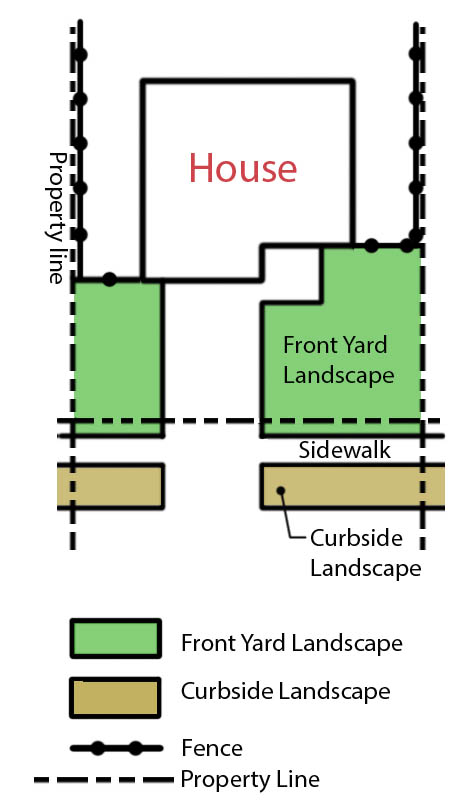
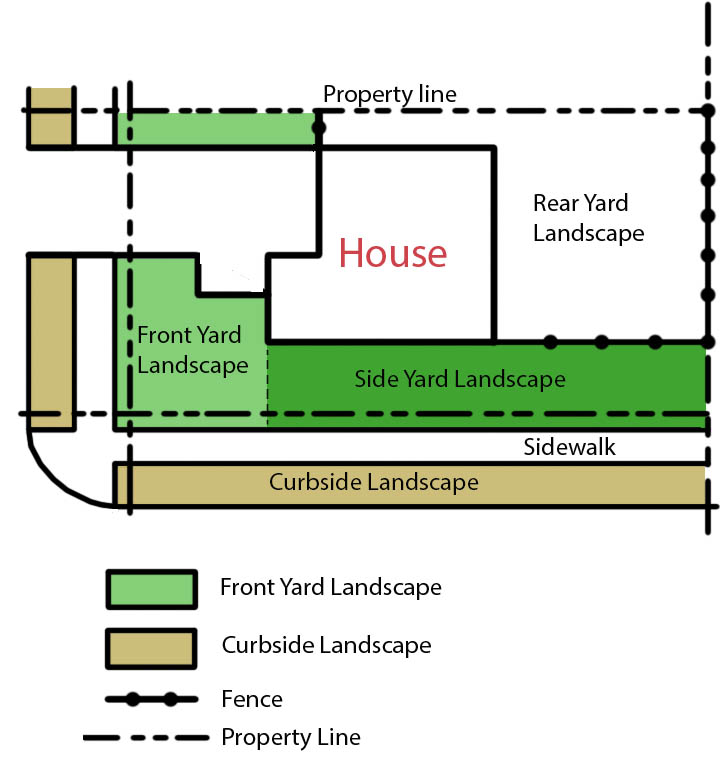
4.7-30 Residential Front Yards and Corner Side Yards
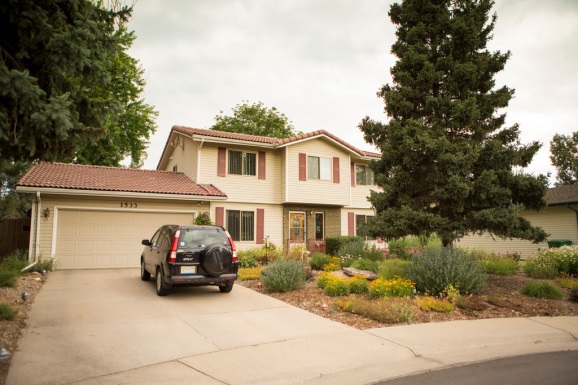
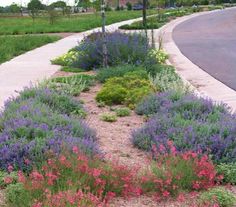
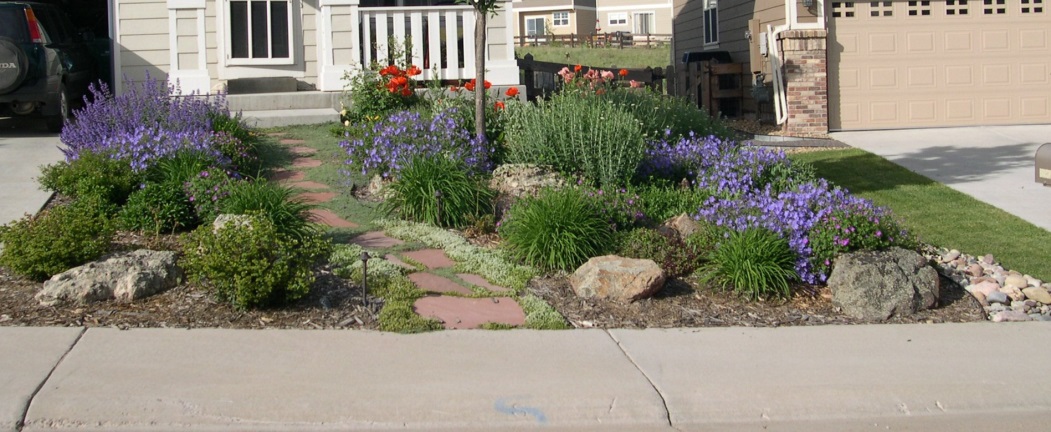
Figure 4.7-31: Water-Wise Front Yard Landscape Examples
8. Erosion Control.
a. Owners of all properties shall, within six months of the first occupancy, or as soon after that period as weather and survival of plants and vegetation will permit, install landscaping to control erosion. Such landscaping shall comply with Table 4.7-2 and the lawn permit and soil preparation procedures established by the Water Department, as well as any lawn establishment requirements contained in this UDO. Any second or later owner of a residential property that does not feature completed landscaping in its front and side yards shall complete the landscaping required in this Section 146-4.7.5.P within six months of the date that Code Enforcement first notifies a property owner, in writing, that the property has not been landscaped in compliance with the provisions of this UDO.
b. No artificial trees, shrubs, plants, or other materials not derived from natural vegetation shall be used to fulfill the requirements as set forth in this Section 146-4.7.5.P, unless approved by the Planning Director based in order to better achieve the intent of this Section 146-4.7.
Q. Landscape Requirements for Redeveloping Sites with Existing Development. The following standards apply to sites with existing development when those sites are redeveloped. Redevelopment shall include changes or expansions to existing parking areas, landscaping, buildings when the gross floor area is expanded by 25 percent or more, or the removal of an existing structure(s) in an effort to construct parking or new buildings.
1. Intent. These redevelopment landscape standards are adopted to encourage improvement of redevelopment sites where existing structures or land uses are outdated, while ensuring that the resulting redevelopment improves the visual quality of the neighborhood and mitigates any negative impacts of the redevelopment on nearby residential development.
2. Landscape Plan Requirements. Landscape plans shall include all required information, symbology, and plan formatting that is typically associated with vacant or cleared land as set forth on application forms and as defined in the Landscape Reference Manual and Site Plan Manual.
3. Landscape Requirements.
a. Minimum plant sizes at time of installation shall comply with the requirements found in this UDO.
b. Within the MU-OA zone district, the development potential of a property is often affected by lot size therefore in an effort to support redevelopment opportunities, the applicant and the City shall work together to include landscaping where screening or tree canopy may be most effective.
c. Within the remaining Subarea A (excluding the MU-OA zone district) and all of Subareas B and C, the following landscape requirements shall be met if deficient and if the proposed redevelopment creates a negative impact as determined by the Planning Director to surrounding existing or future development on adjoining properties or street frontages.
d. The landscape requirements as outlined in Sections 146-4.7.5.A through 4.7.5.P shall apply and be reviewed against each redevelopment application for applicability. This includes curbside streetscape, street and non-street frontage buffers, special landscape buffers, building perimeter landscaping, site entryway and intersection landscaping, parking lot landscaping & screening, urban street frontages, and residential front yard landscapes.
R. Seeding of Disturbed Land for Future Construction Phases. All future development areas in phased development projects that have been disturbed by grading shall be seeded and stabilized in accordance with requirements found in the City of Aurora Water Department’s Rules and Regulations Regarding Storm water (Discharge) for Construction Activities to prevent wind and water erosion for the time the site remains without development. All such areas shall be shown on the landscape plan and information concerning tilling, seeding methods, seed mixtures, watering and mulching shall also be provided.
S. Alternative Compliance. The Planning Director is authorized to approve alternatives to the location, amounts, or types of landscaping required under this Section 146-4.7.5 (Required Landscaping) provided that the applicant submits a landscape plan for alternative compliance and the Director determines that:
1. The need for an alternative compliance plan is based on site or development constraints not generally shared by other similar uses and structures in the area, including but not limited to topography; soil conditions; utility or access easement locations; or considerations of traffic, pedestrian, bicycle, or public transit safety; and
2. The alternative compliance plan will achieve the goals of the types of landscaping required by this Section 146-4.7.5, including but not limited to buffering of adjacent properties from the impacts of the proposed development of the site, visual appeal of the site from public and private streets and rights-of-way, creation of shade and cooling of the environment, as well or better than compliance with the standards otherwise required by this Section 146-4.7.5 (Required Landscaping). (Ord. No. 2023-41 §§ 5 – 14, 09-11-2023; Ord. No. 2023-40 § 2, 09-11-2023; Ord. No. 2023-29 §§ 2 – 6, 07-31-2023; Ord. No. 2022-17 §§ 8 – 10, 04-25-2022; Ord. No. 2020-37 §§ 19 – 21, 10-05-2020; Ord. No. 2019-49 § 1, 08-19-2019)